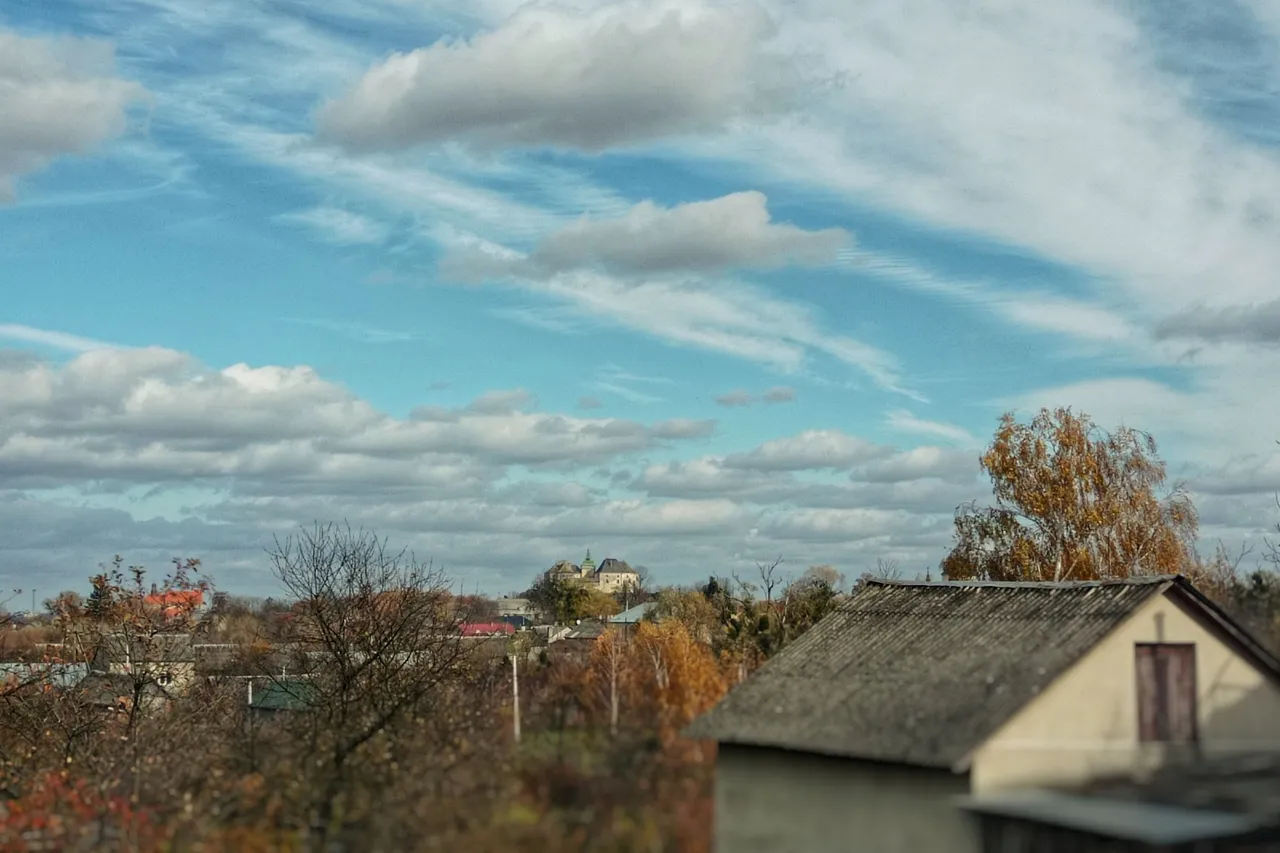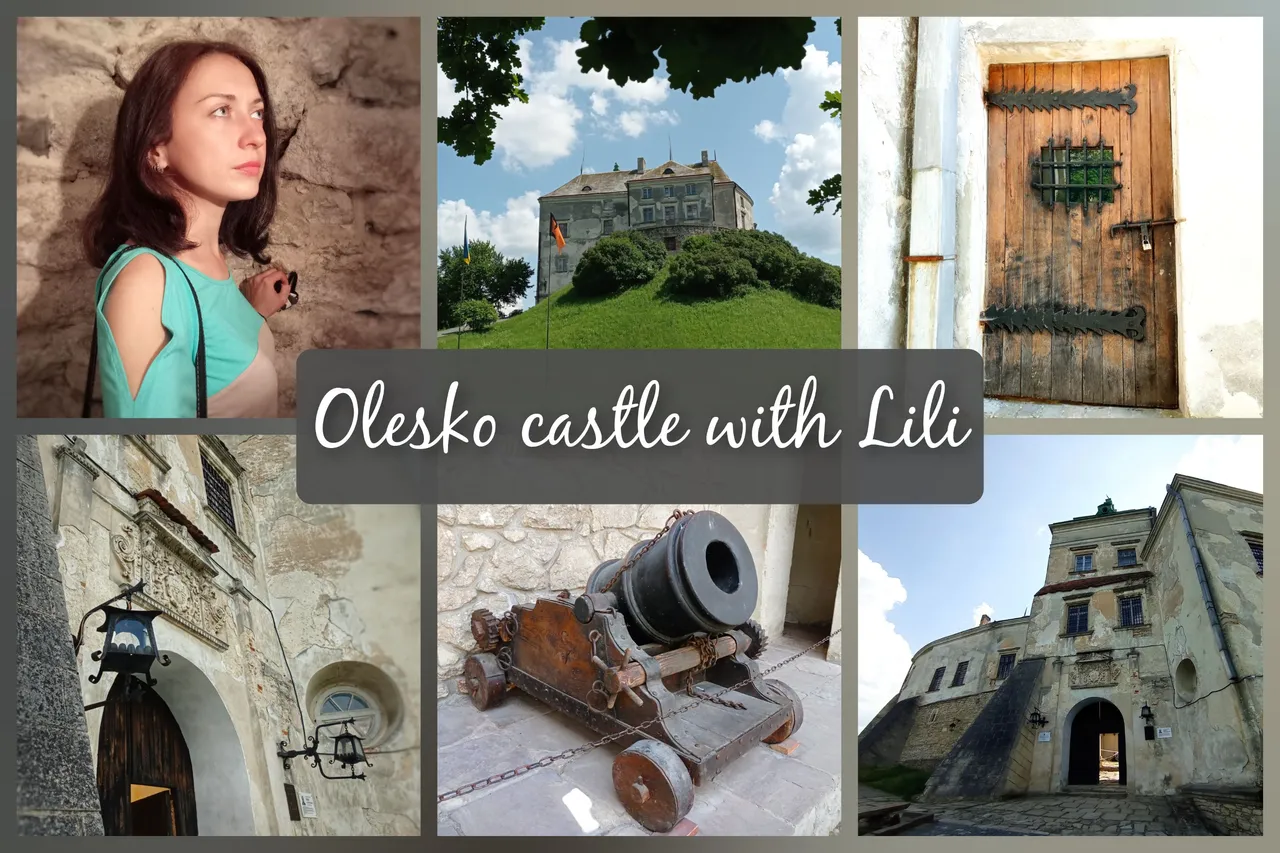
I love this castle, so I can not dare to write about it. It's hard to find words... It is neither the biggest, nor the most beautiful, nor the most luxurious among his other "brothers". But it's my native. And this is a good reason to become the hero of my article!
I want to compare it with an ascetic monk who is constantly in reflections. He prays or meditates. But if necessary, when he is attacked, he can take up arms and protect himself and everyone around him.
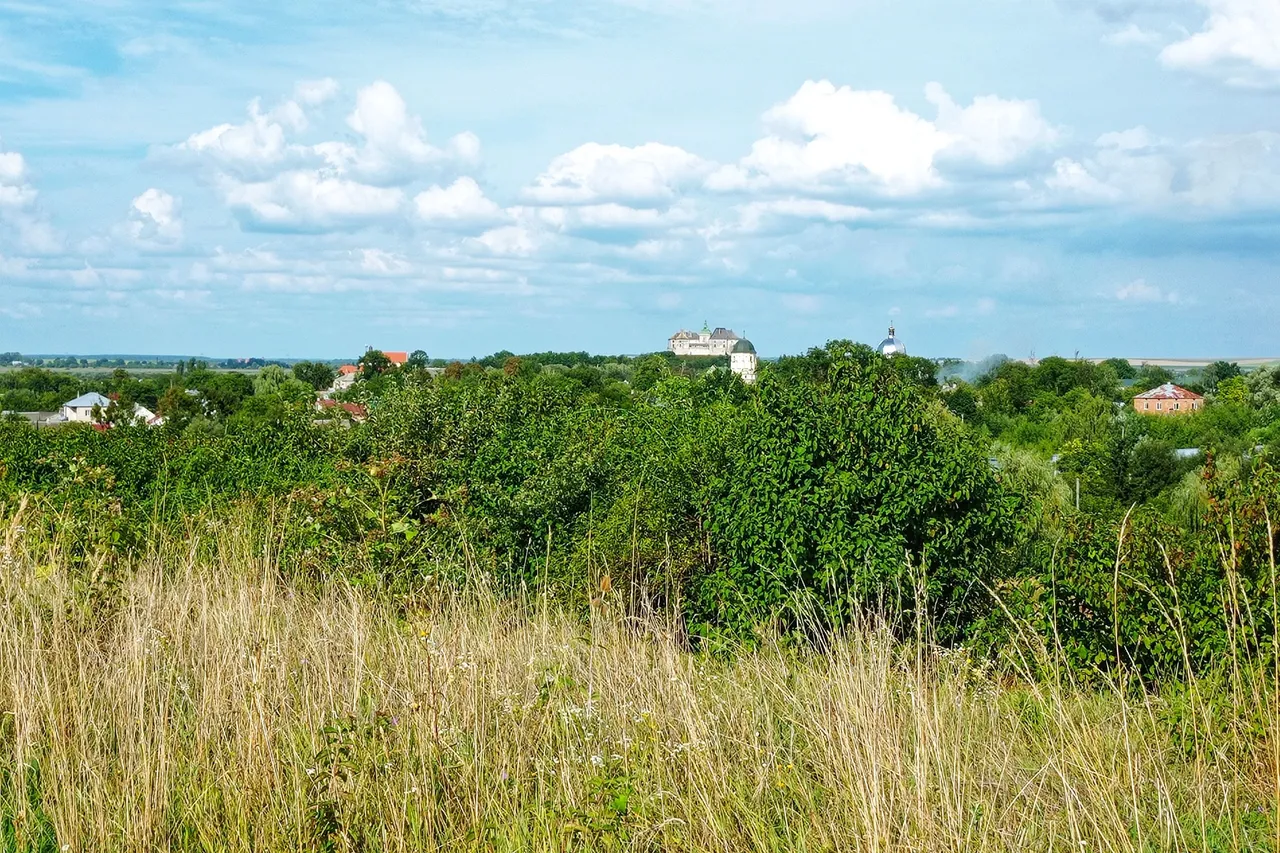
Looking at It from a distance of 4 km, sitting on my hill above the village, I feel the invisible protection of this giant. And maybe now it's just pathetic words, but this castle could well have saved the life of one of my distant ancestors!
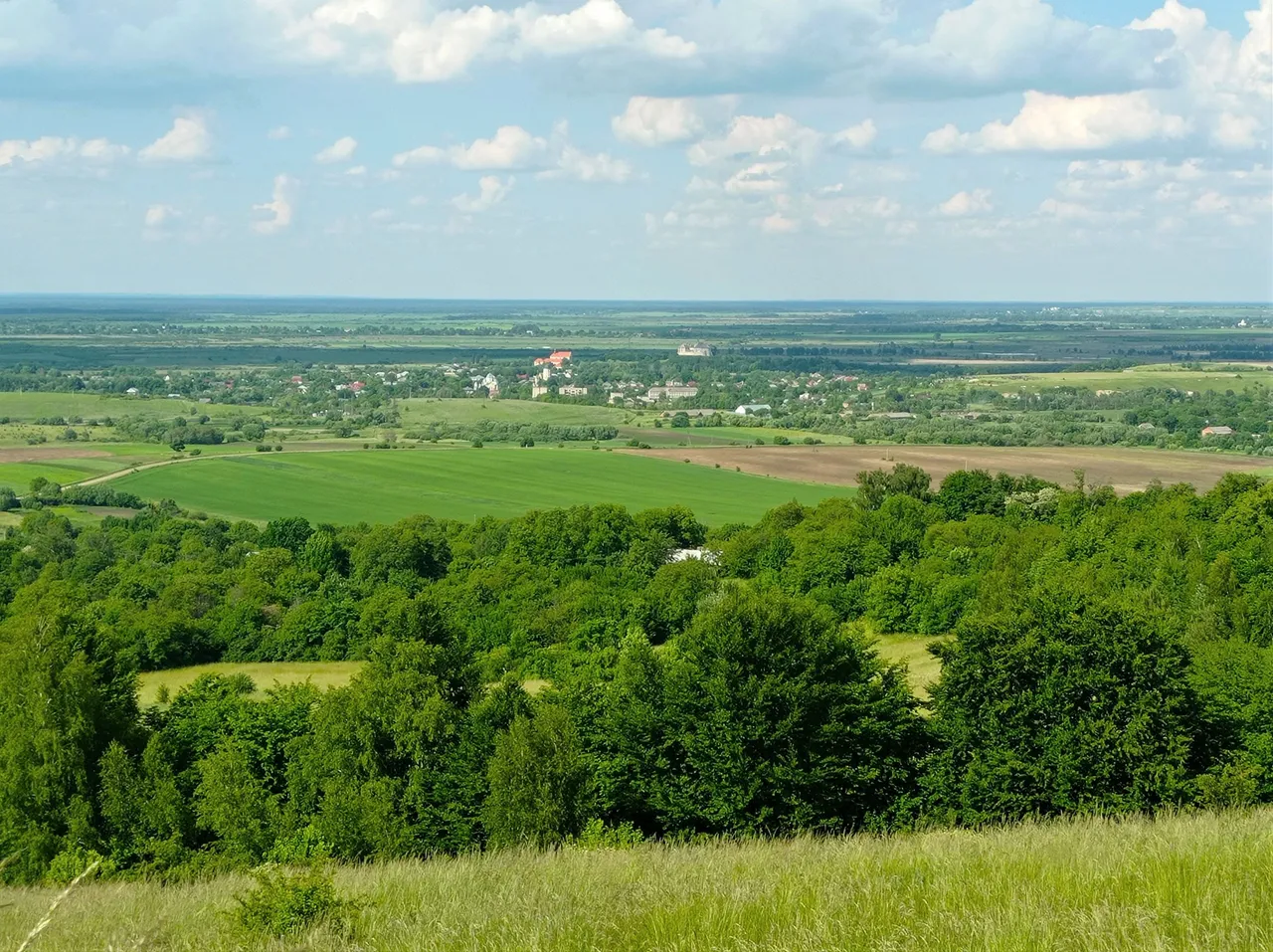
I like to see it on the horizon. People from the surrounding villages also see it in their own way, from other angles.
The castle was built in the troubled times, when the ancient Rus' state had fallen into disrepair and was constantly attacked by Tatars. The town of Olesko lies on a flat plain, where there are some swamps, some streams and some peat. And here rises a fifty-meter hill, on which once built the first stone wall to protect civilians from various enemies. It was surrounded on almost all sides by a swamp, which provided good protection.
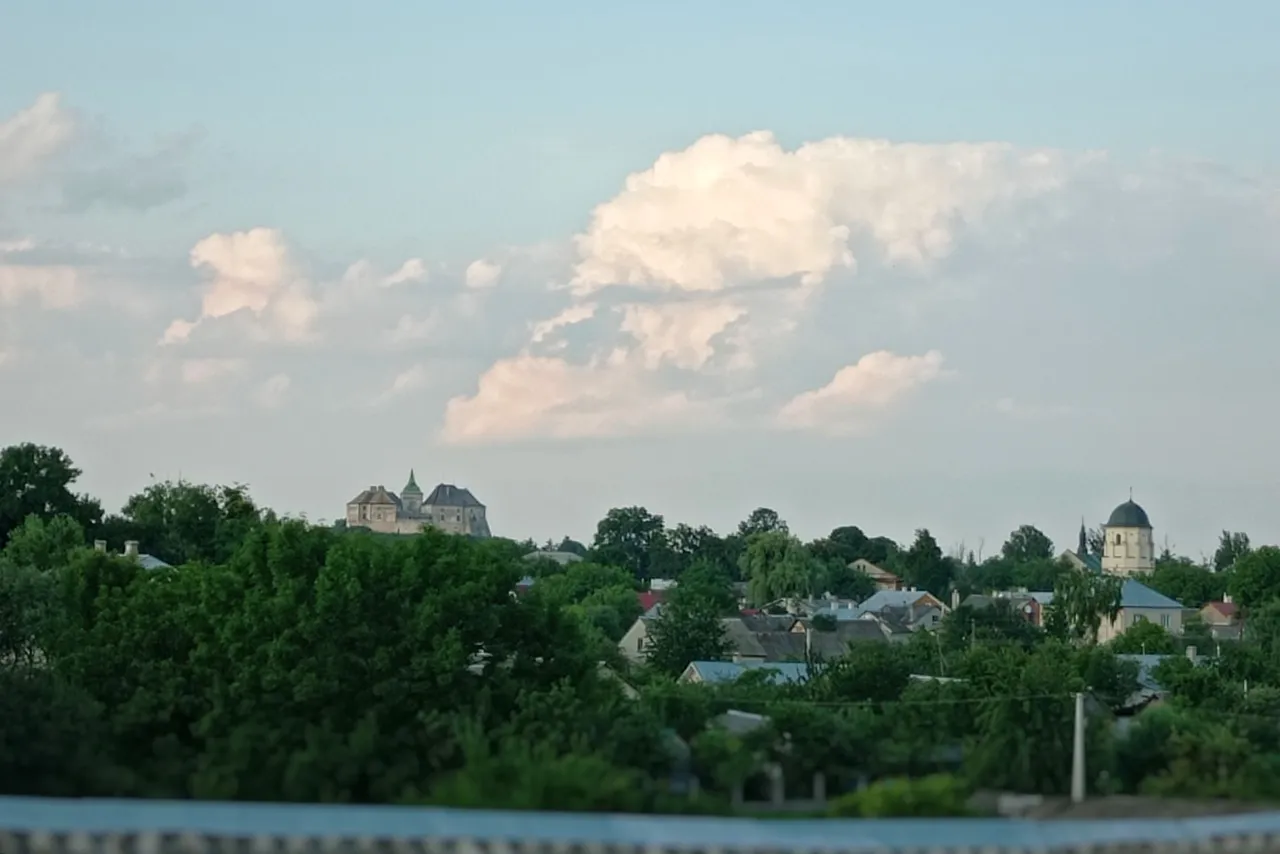
View of the castle from the yard of my relatives.
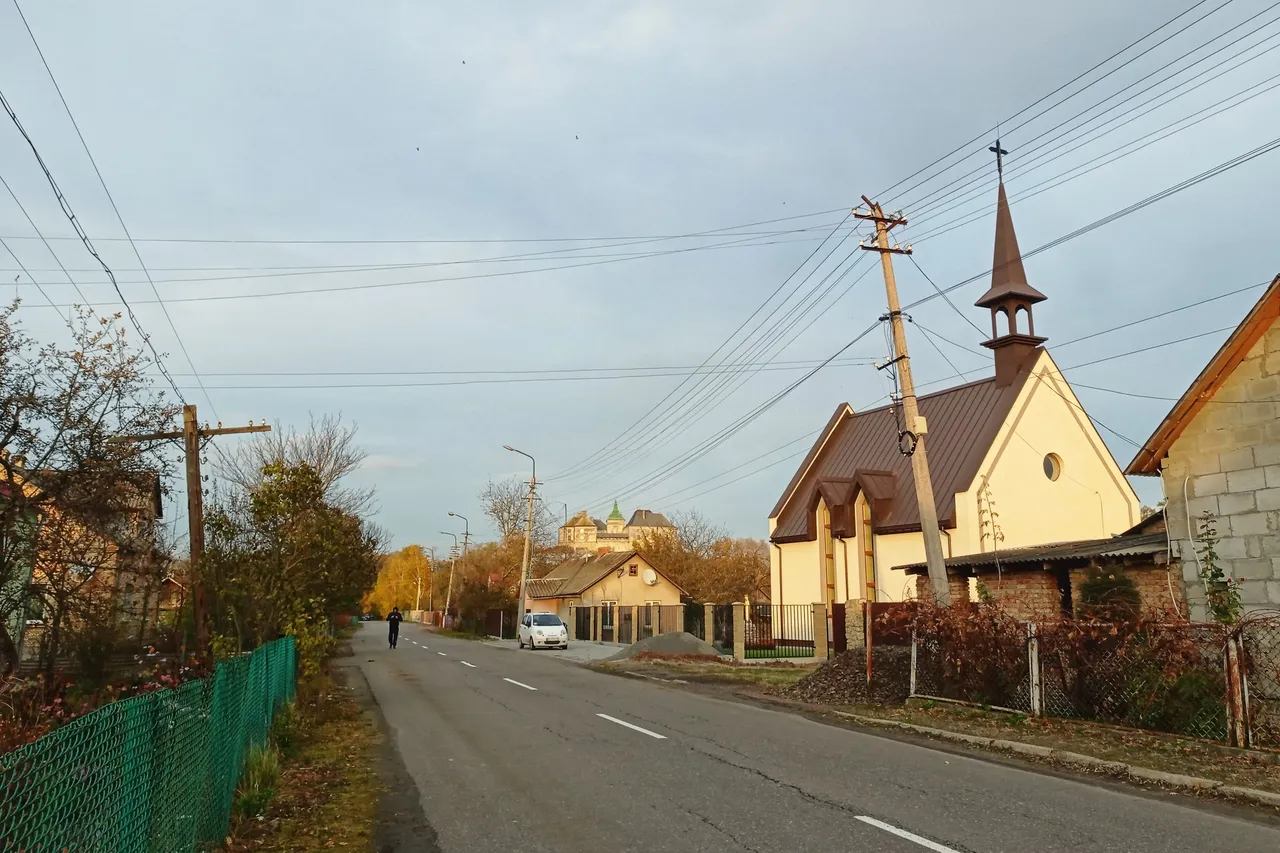
Now tall mighty trees grow around the castle, which "protect" it from cameras. Indeed, it can be captured in the frame either from a long distance or very close. So, next photos were taken in October, when some of the leaves had already fallen.
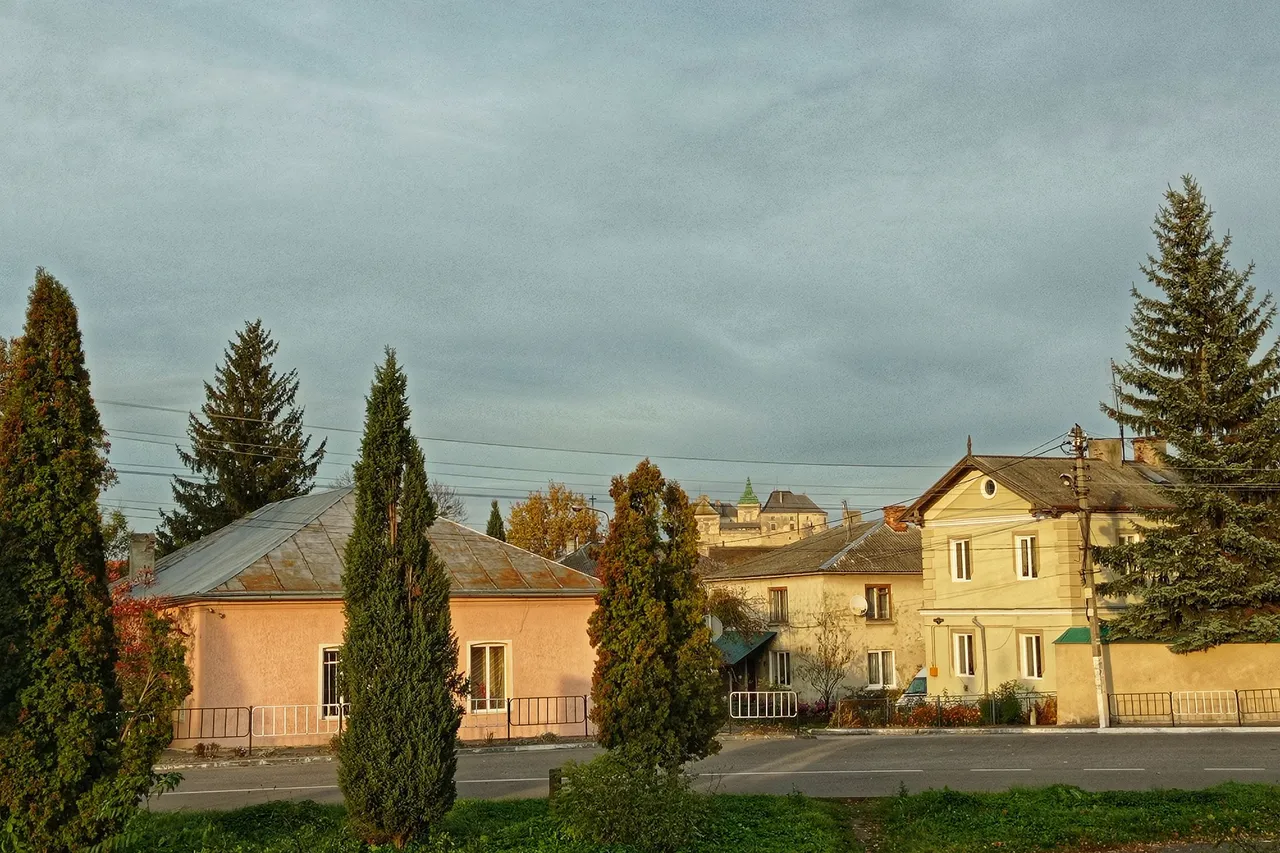
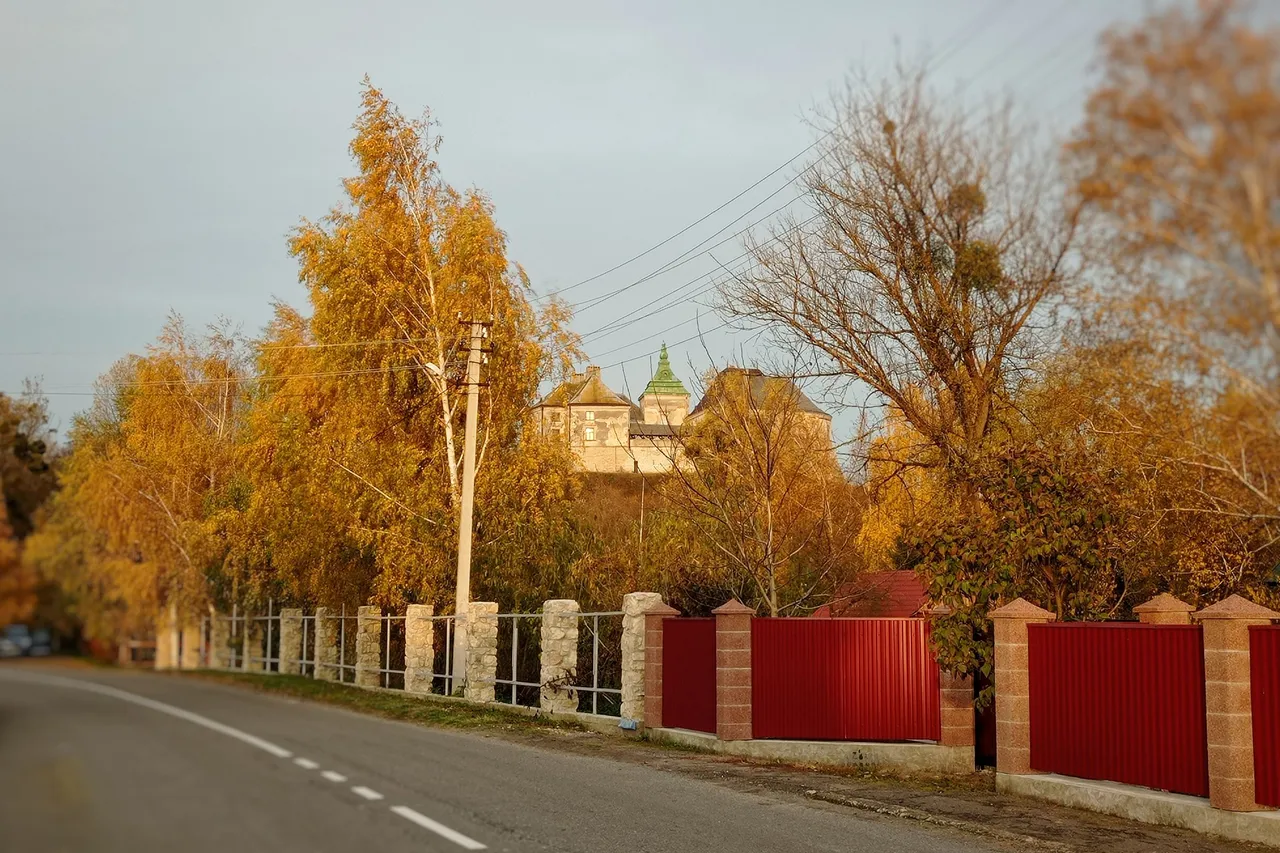
But now let's back to hot July'21.
I have been here many times, as part of various tourist groups or just with relatives.
The castle is part of the Golden Horseshoe tour along with Pidhirtsi and Zolochiv castles.
All my old photos have disappeared somewhere:( Two years ago my laptop was stolen, where many photos were stored.
So, this summer I was waiting for a few friends to visit the castle together and to refresh my memories. But my friends could not come and I went there alone.
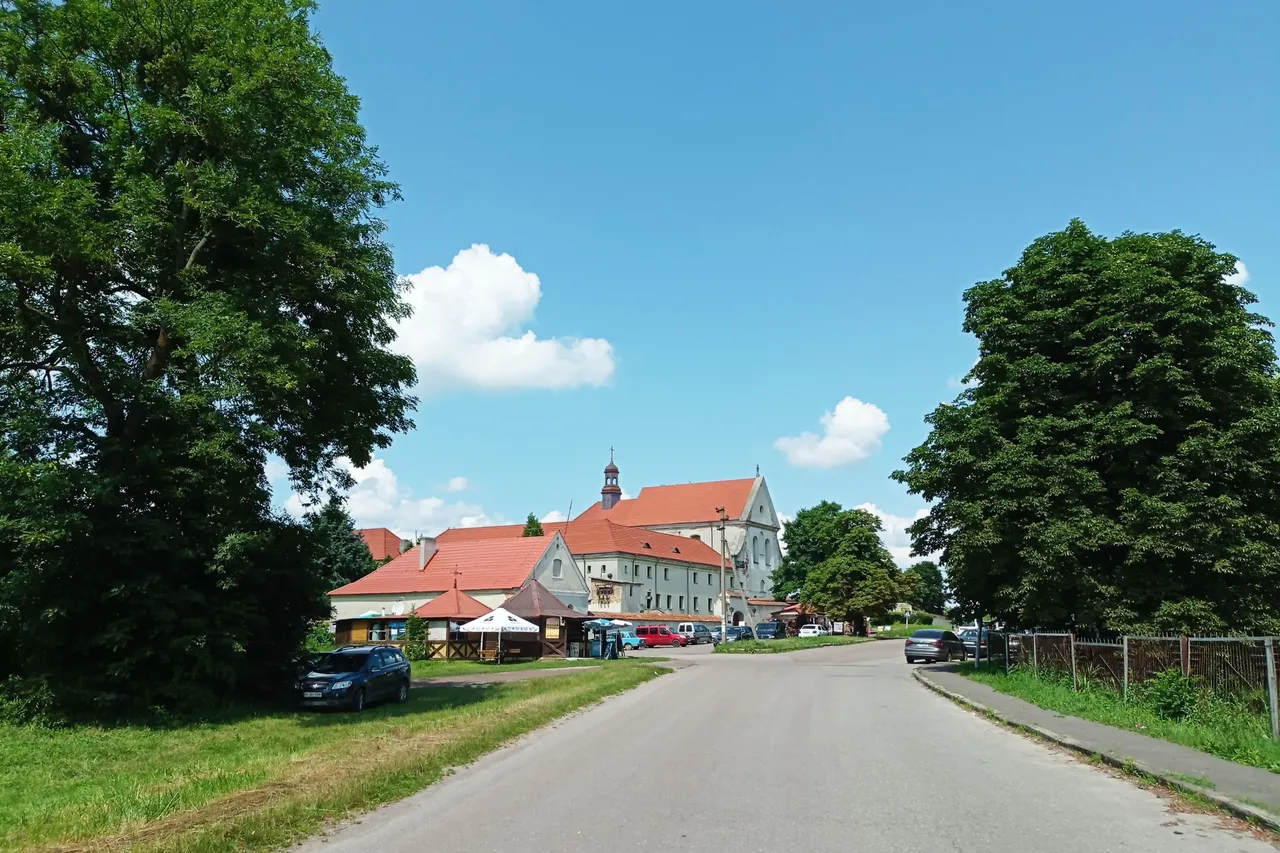
In the distance you can see the Capuchin monastery of the 18th century, which is now under restoration.
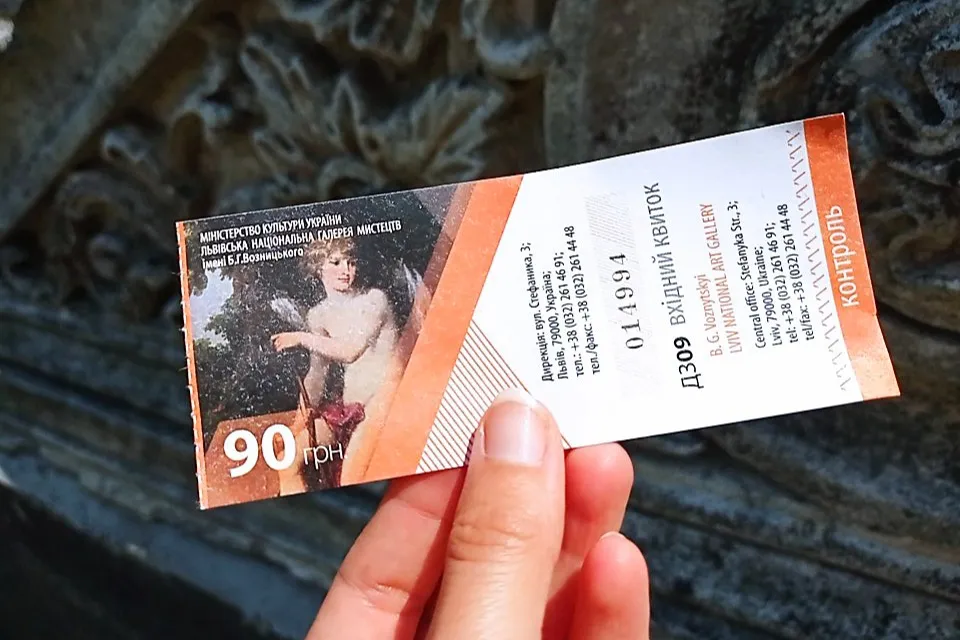
Having bought tickets, we walk along the alley of the park to the main entrance to the castle courtyard.

The castle was built by one of the grandsons of the Rus' prince Lev, and the first mention of it dates back to 1327.
Of course, then it looked more primitive. Olesky Castle acquired its modern look somewhere in the 17th century. Initially, Lithuanians and Poles competed for this territory, wanting to annex good fertile land to their great powers.

Our people periodically rebelled against foreign rule. And the monument "Rusychi" reminds us of one such uprising in 1431. It portrays courageous ordinary people. There are soldiers and peasants.
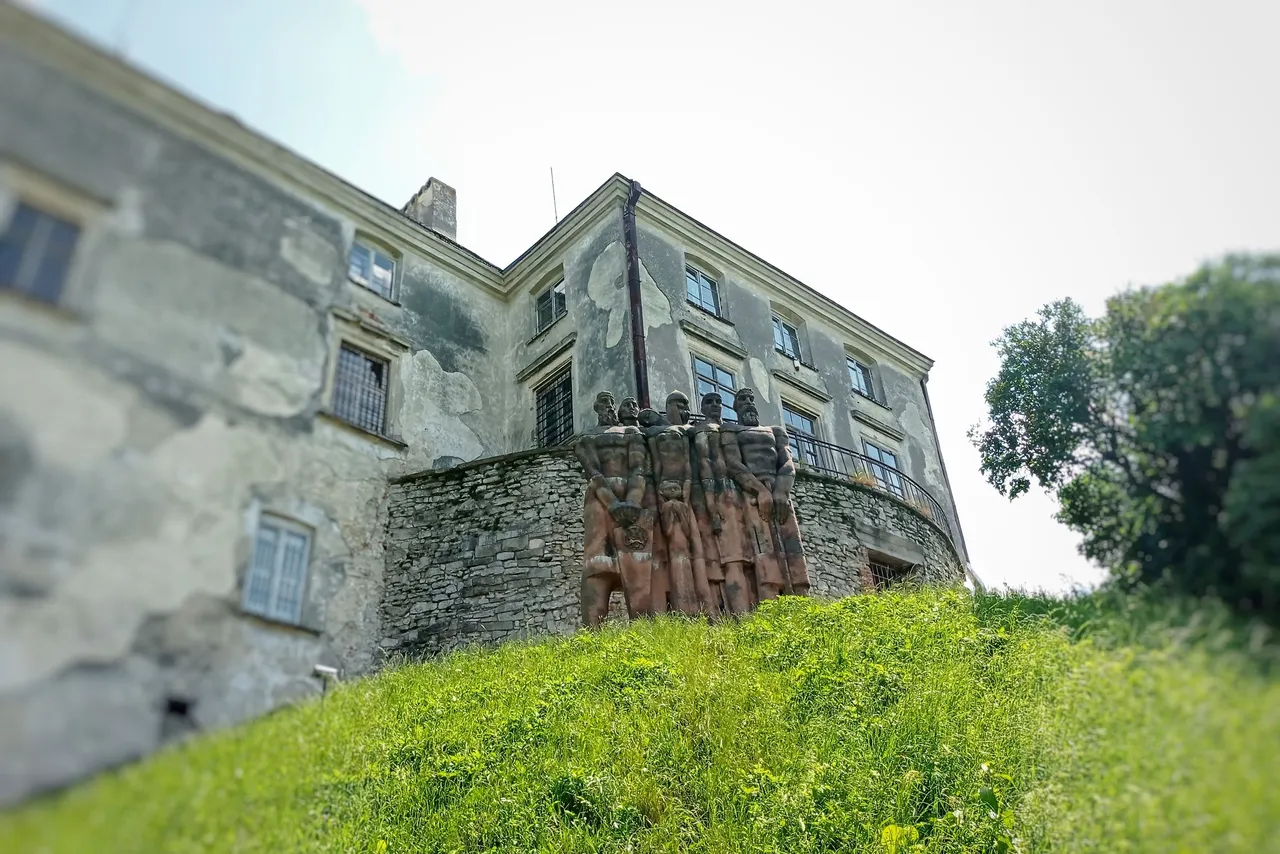

There used to be a wonderful cafe with a medieval design "Grуdnytsia". This word means a place where soldiers once ate. The cafe is closed for unknown reasons.
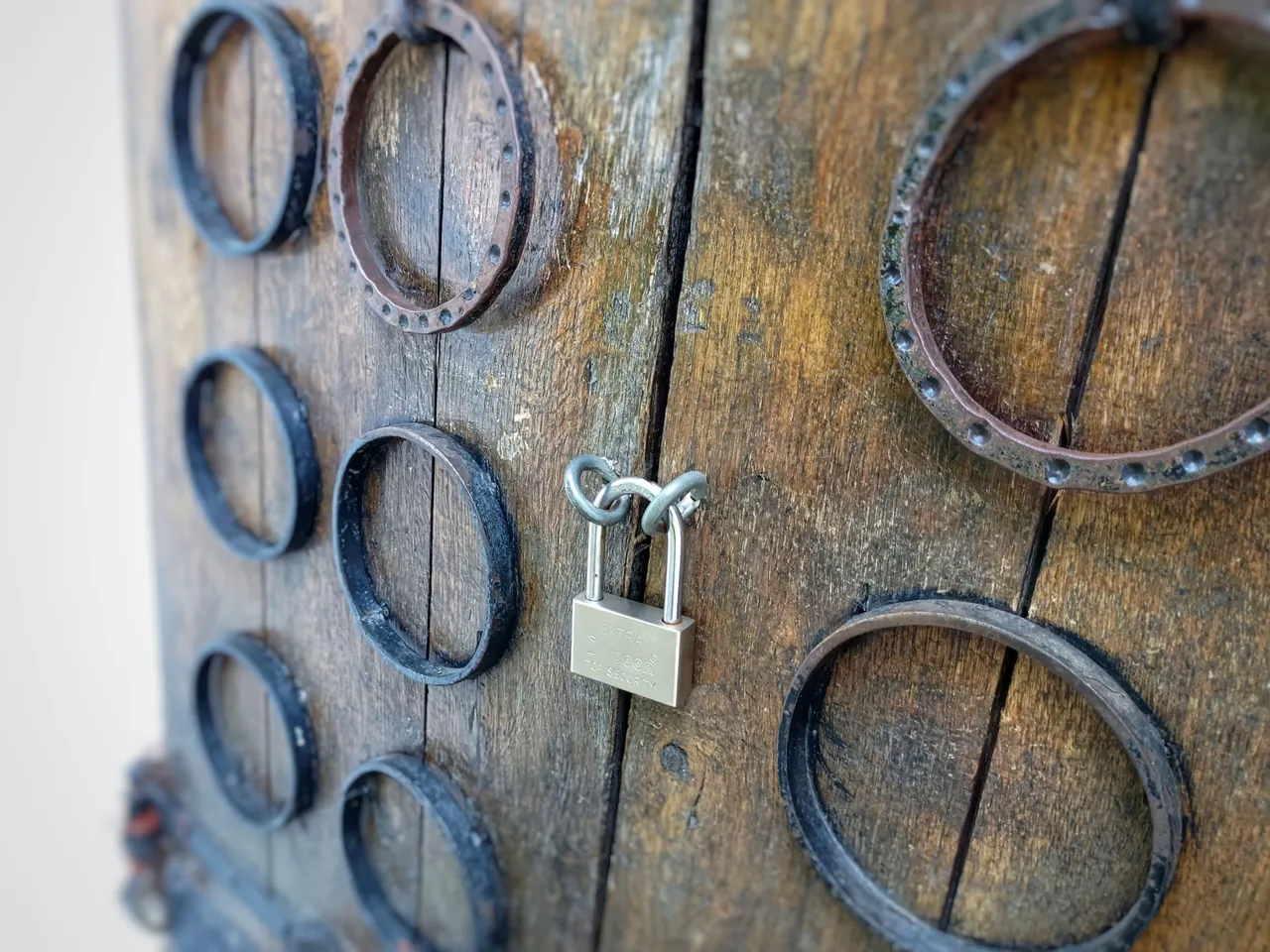
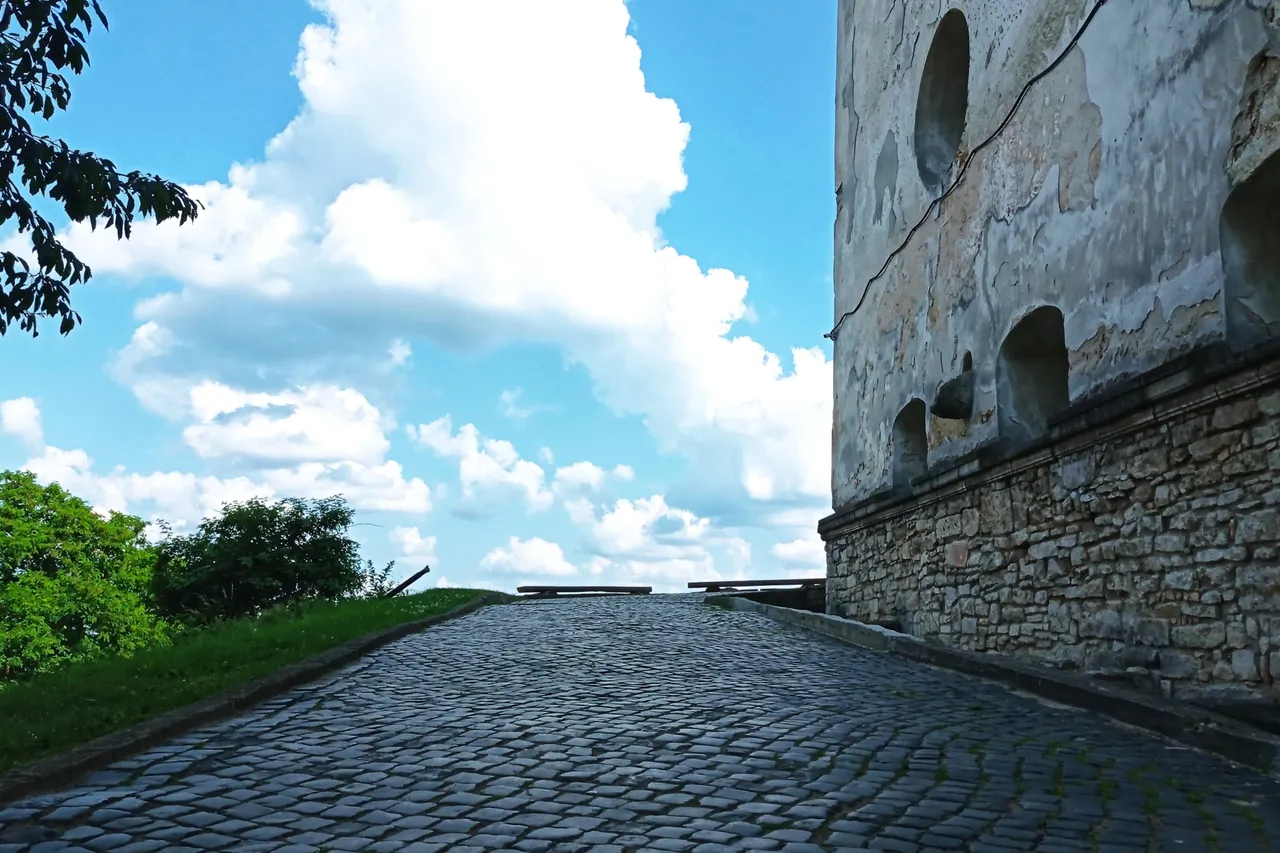
From the 15th century the area was ceded to Poland (then called the Polish-Lithuanian Commonwealth) and the owners of the castle often changed.
Perhaps the family of magnat Jan Danilovich cared most about the development of the castle. Later, after historical vicissitudes, the castle was bought by Danilovich's grandson, King Jan III Sobieski of Poland, who was born here in 1629. It is said that during his birth there was a strong thunderstorm and a lightning strike split the marble table in half, where the newborn baby was placed. May be this is a nice legend...
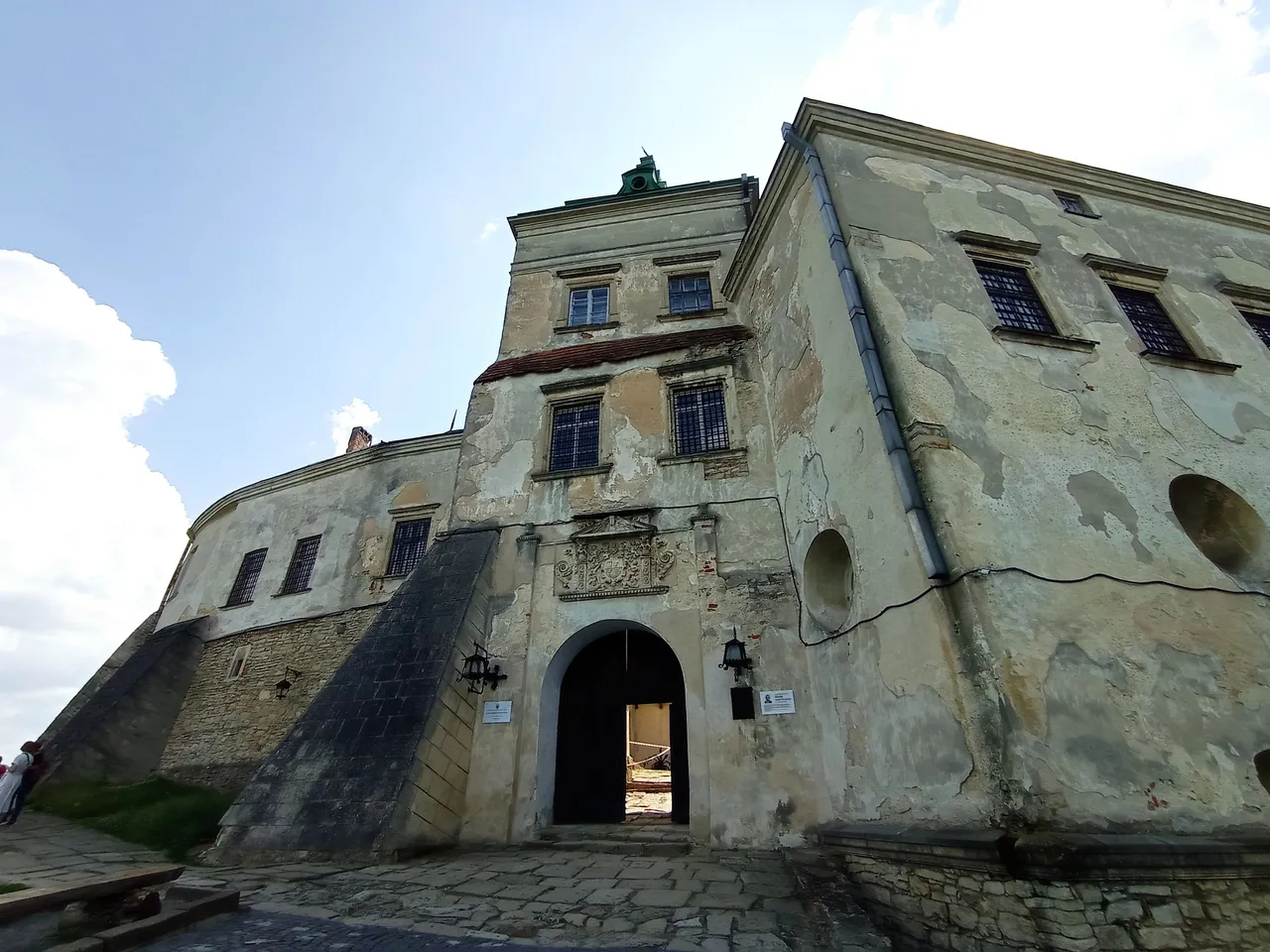
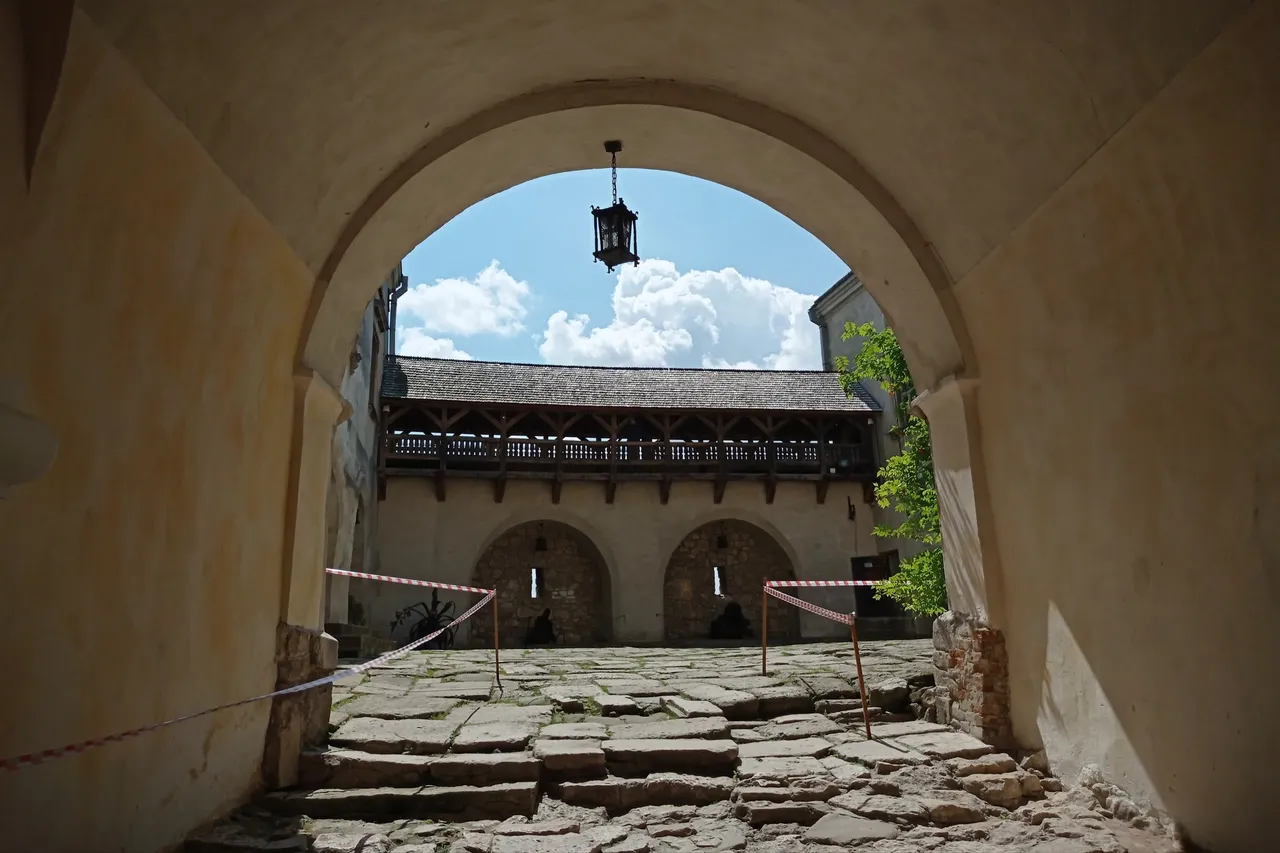
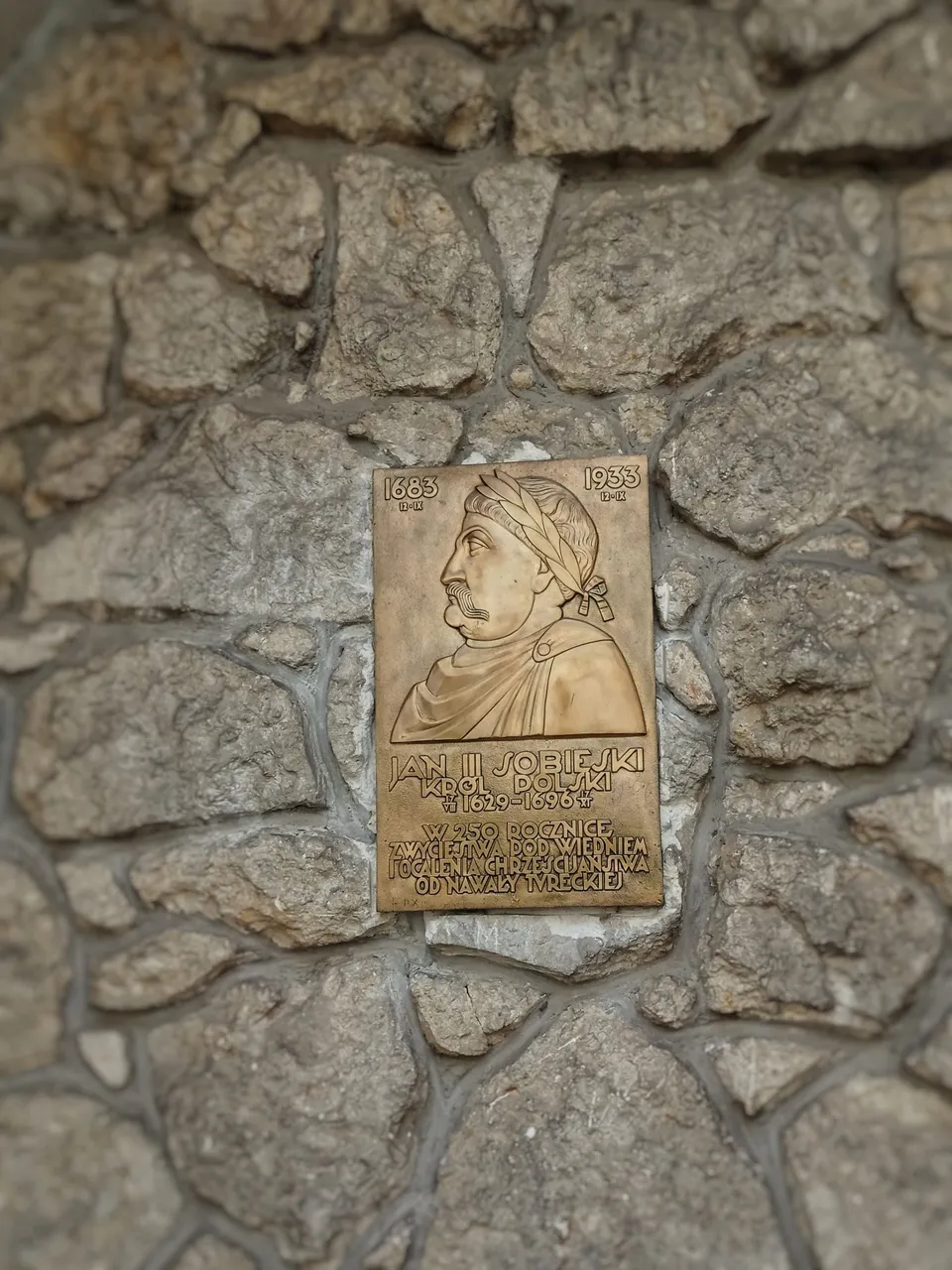
Under the auspices of Jan III, a somewhat primitive castle was turned into a Renaissance palace. They built a tower that connects the two buildings, created portals with lush stucco, marble fireplaces.
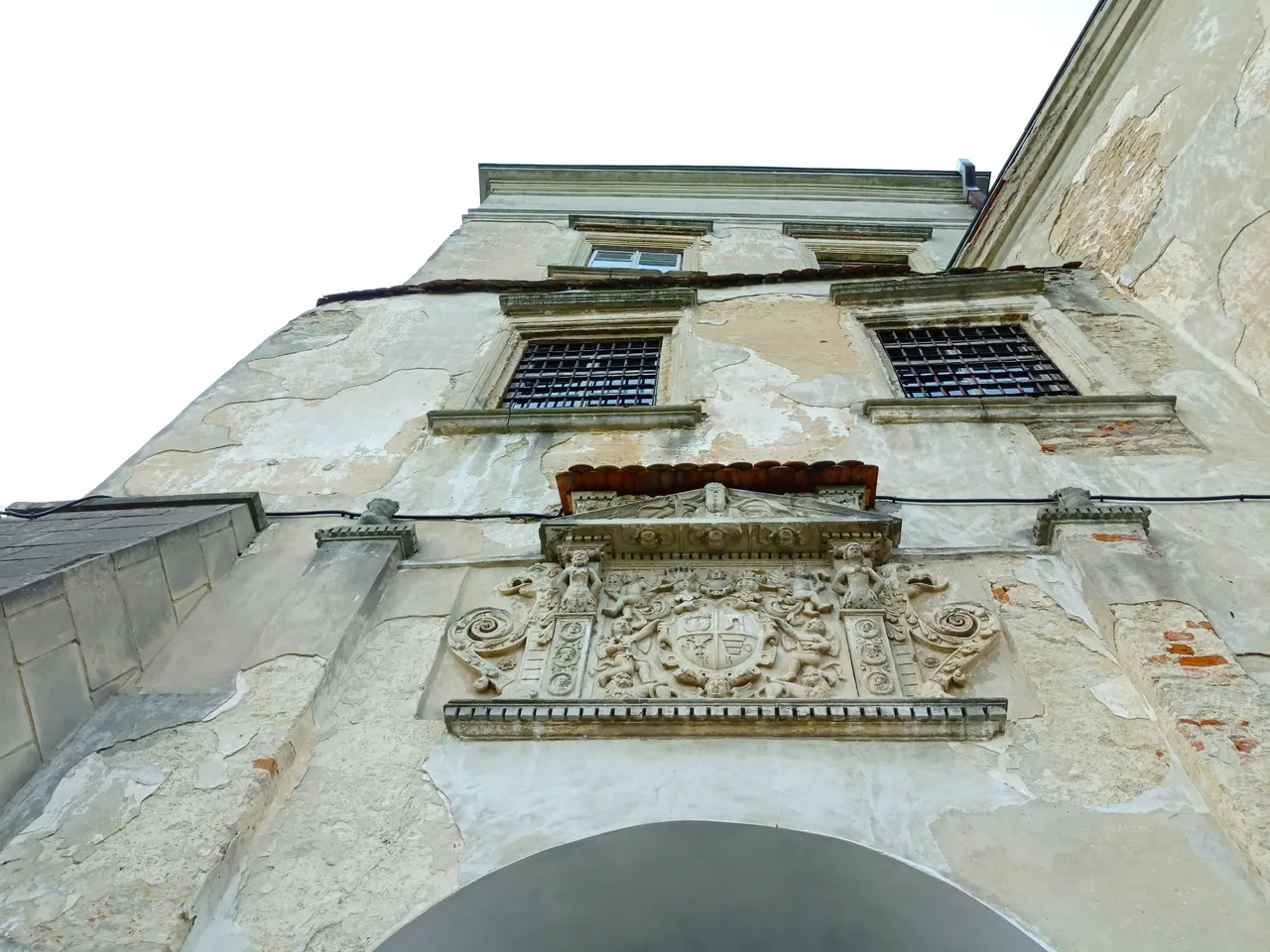
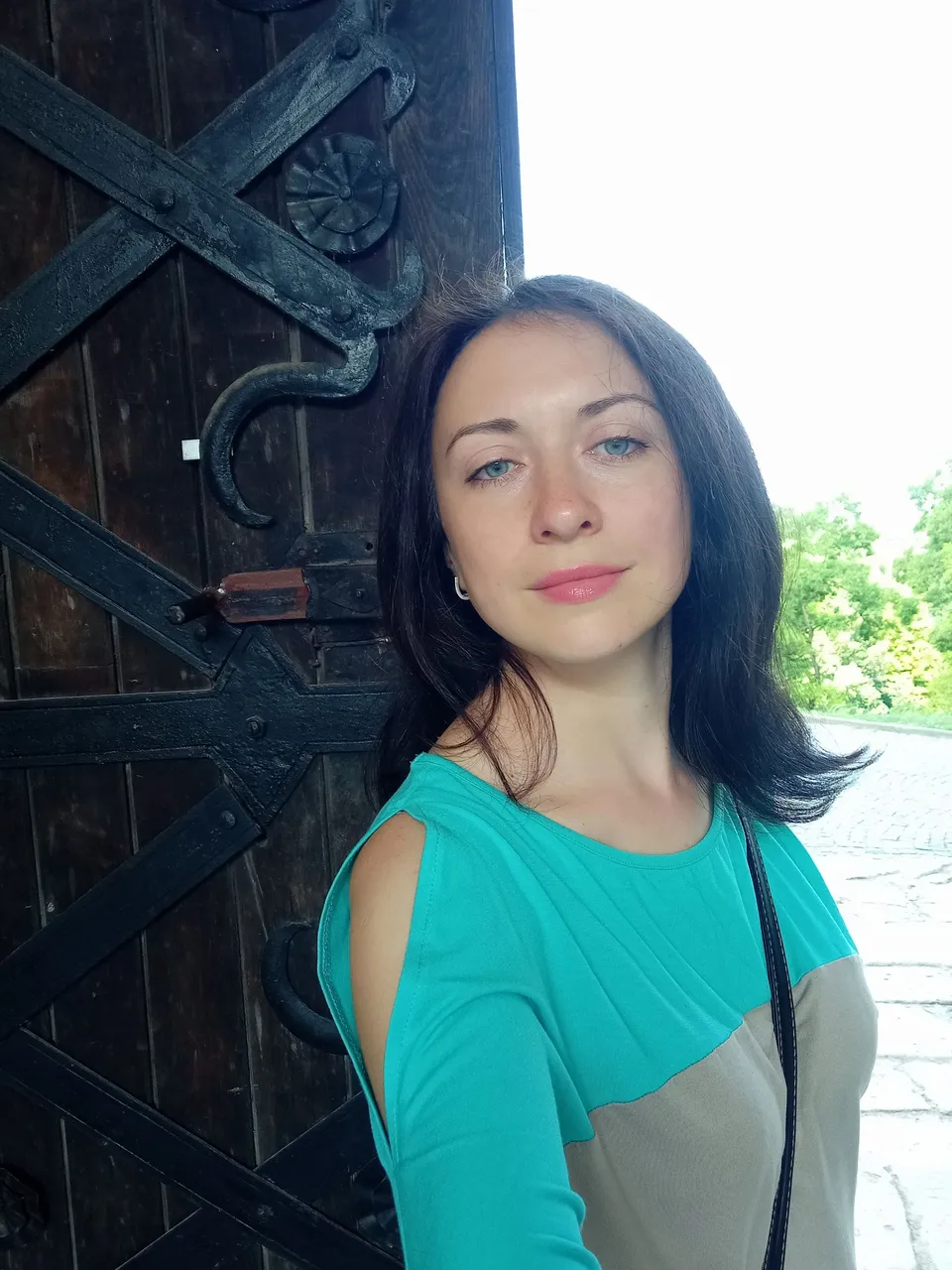
However, not all owners cared so much about the castle, because maintaining a large building is a financially difficult task!
Later (in the 18th century) the castle and the village passed to the Zhevuski family. Vaclav Zhevusky preferred the neighboring Pidhirtsi Castle, so he took all the paintings, utensils, furniture there!
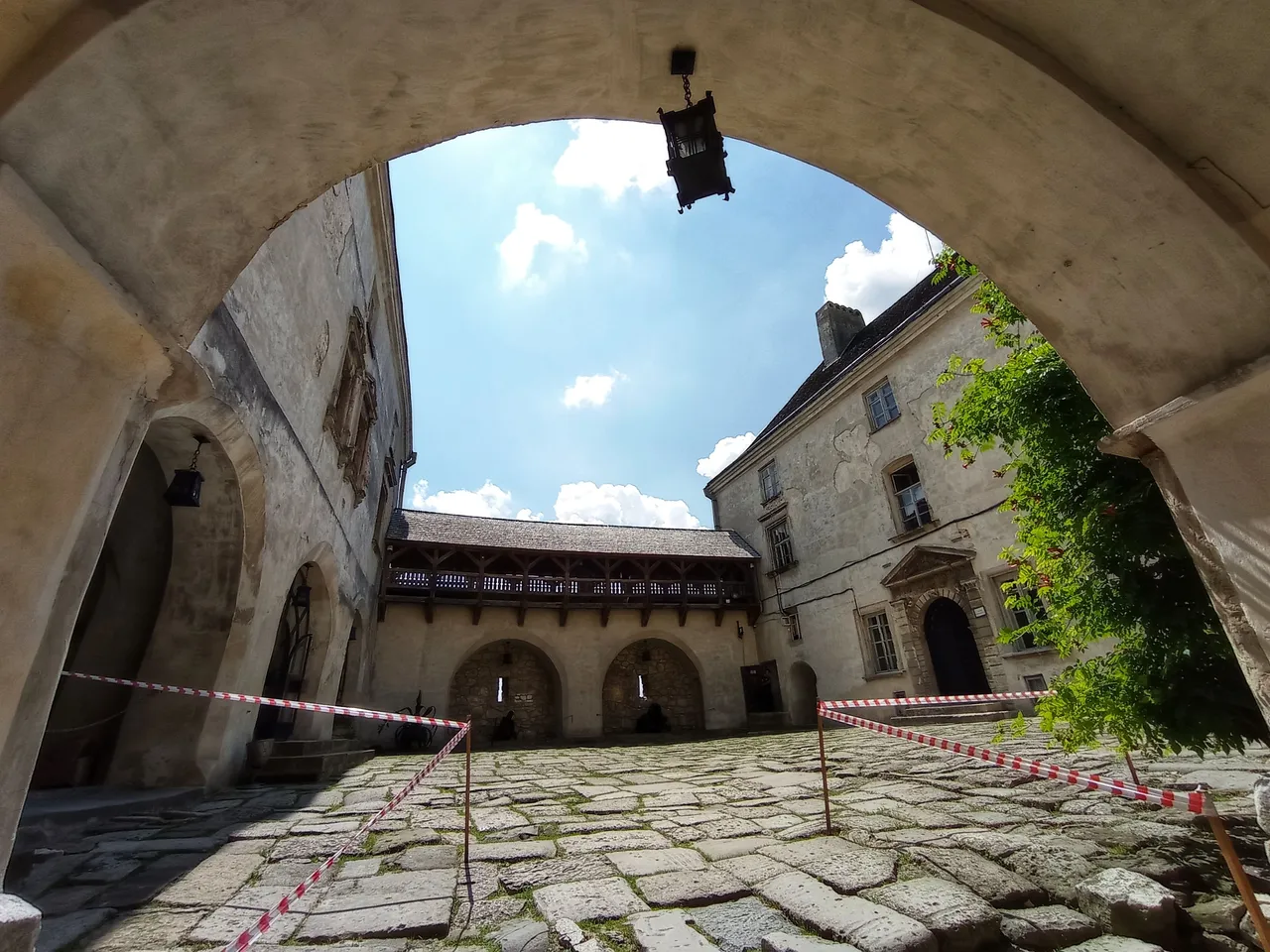
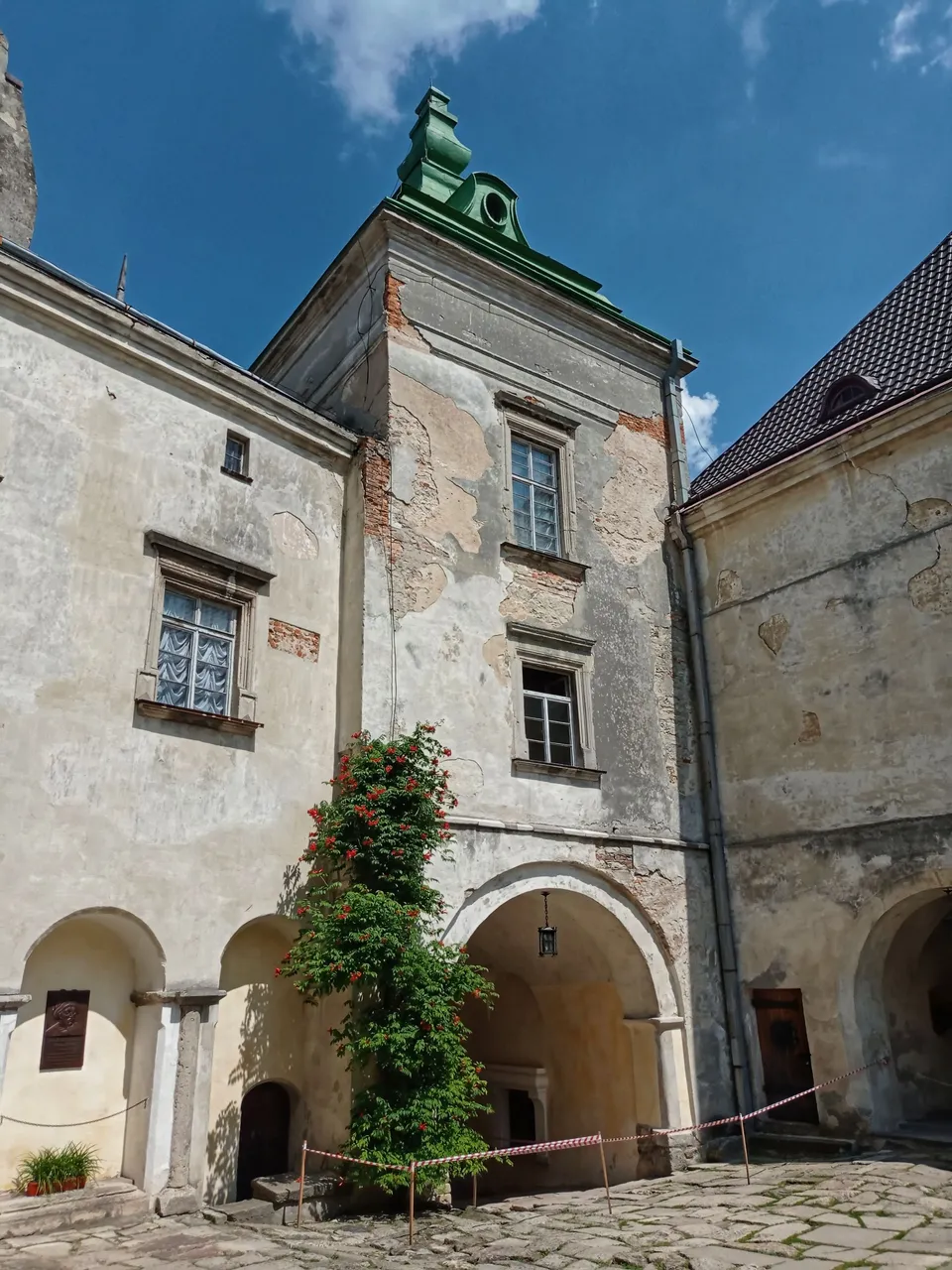
In the 19th century, Olesko Castle was owned by the impoverished Litynski family. One day, they accidentally found a treasure walled up by an unknown previous resident. Then the real gold rush began and they tore down the floors, smashed fireplaces to find new treasures. This is not a legend. That is a fact.
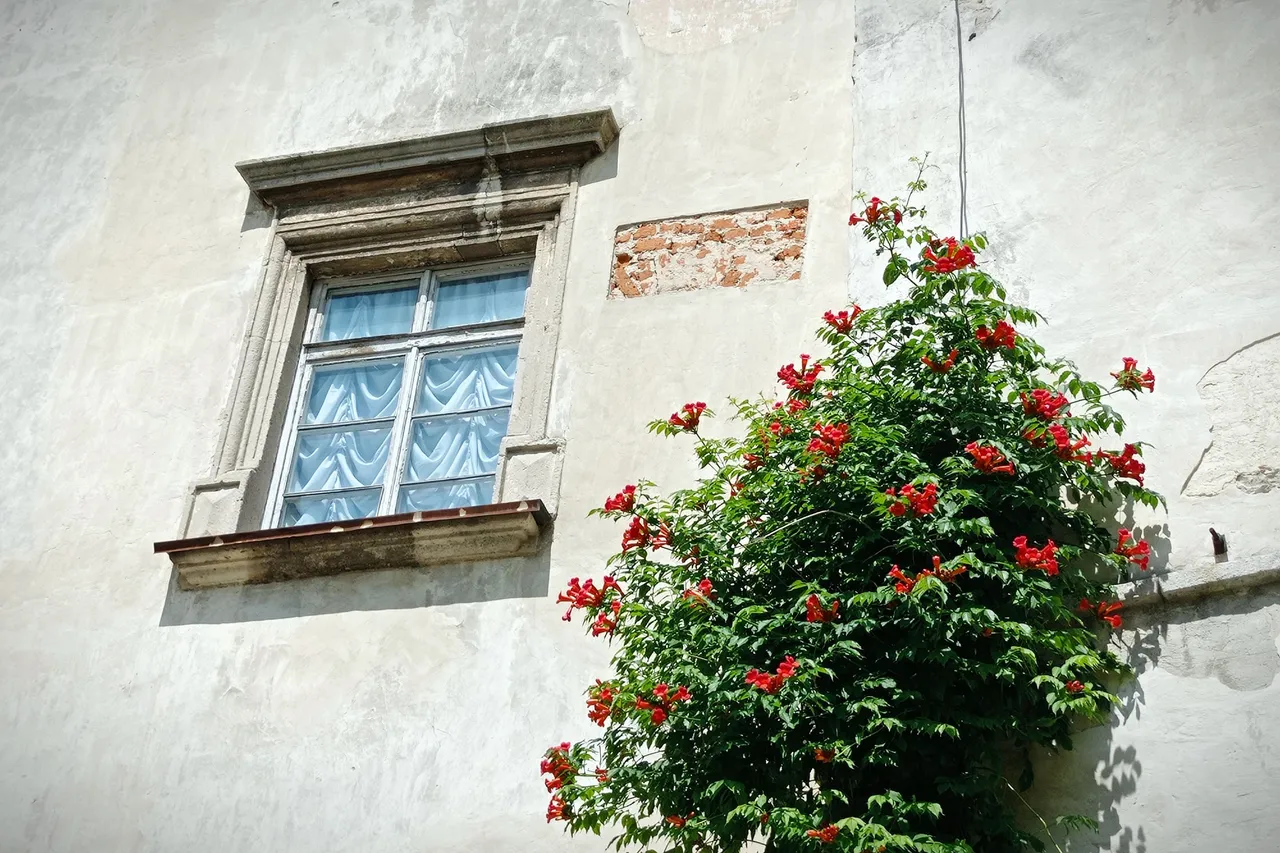
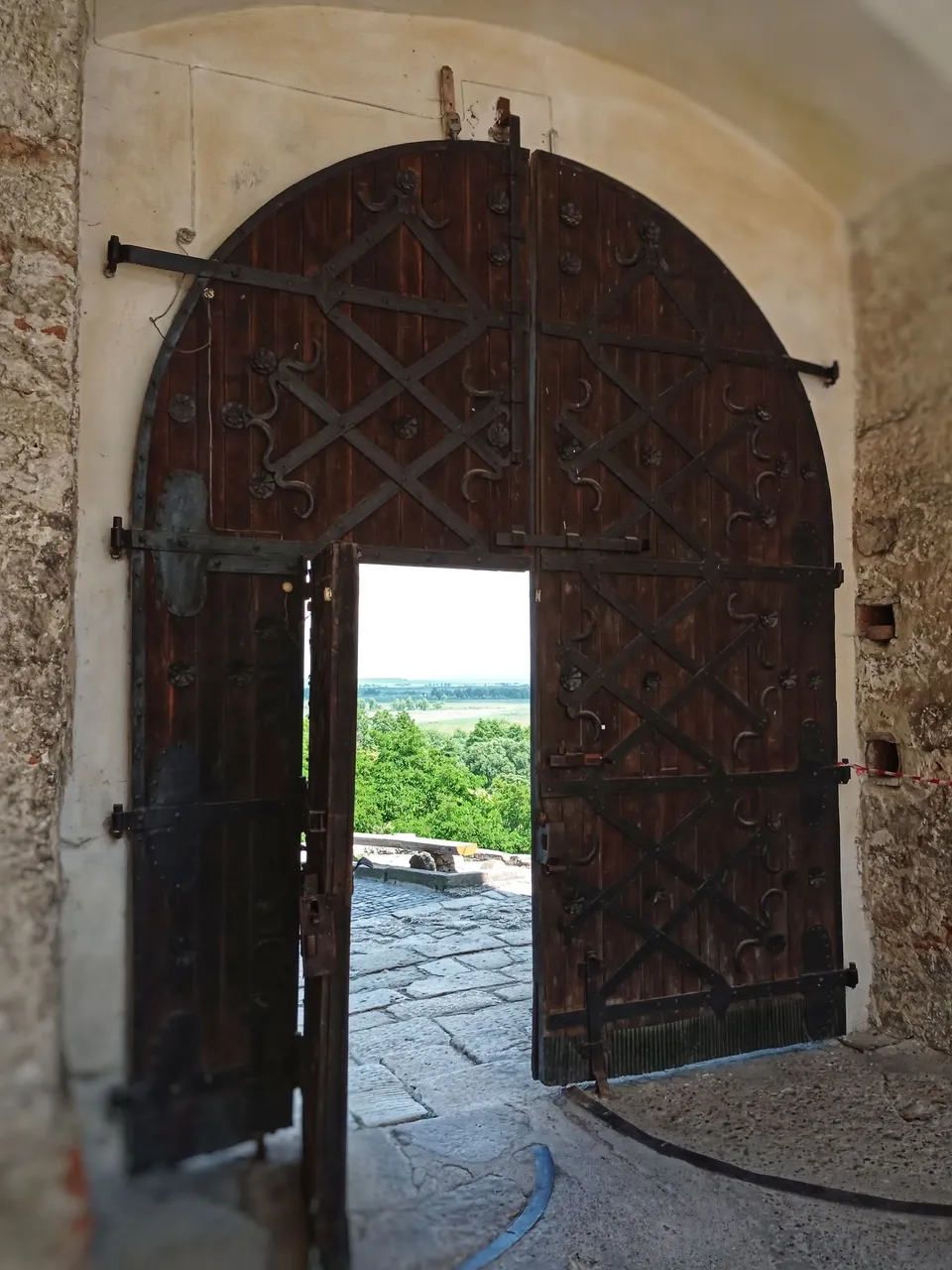
At the beginning of the 20th century the castle became the property of the state (then we were part of the Austrian Empire). Attempts were made to restore the castle, but two world wars and lightning with fire in 1951 brought the building to great ruin! Only the walls survived. No roof, no windows.
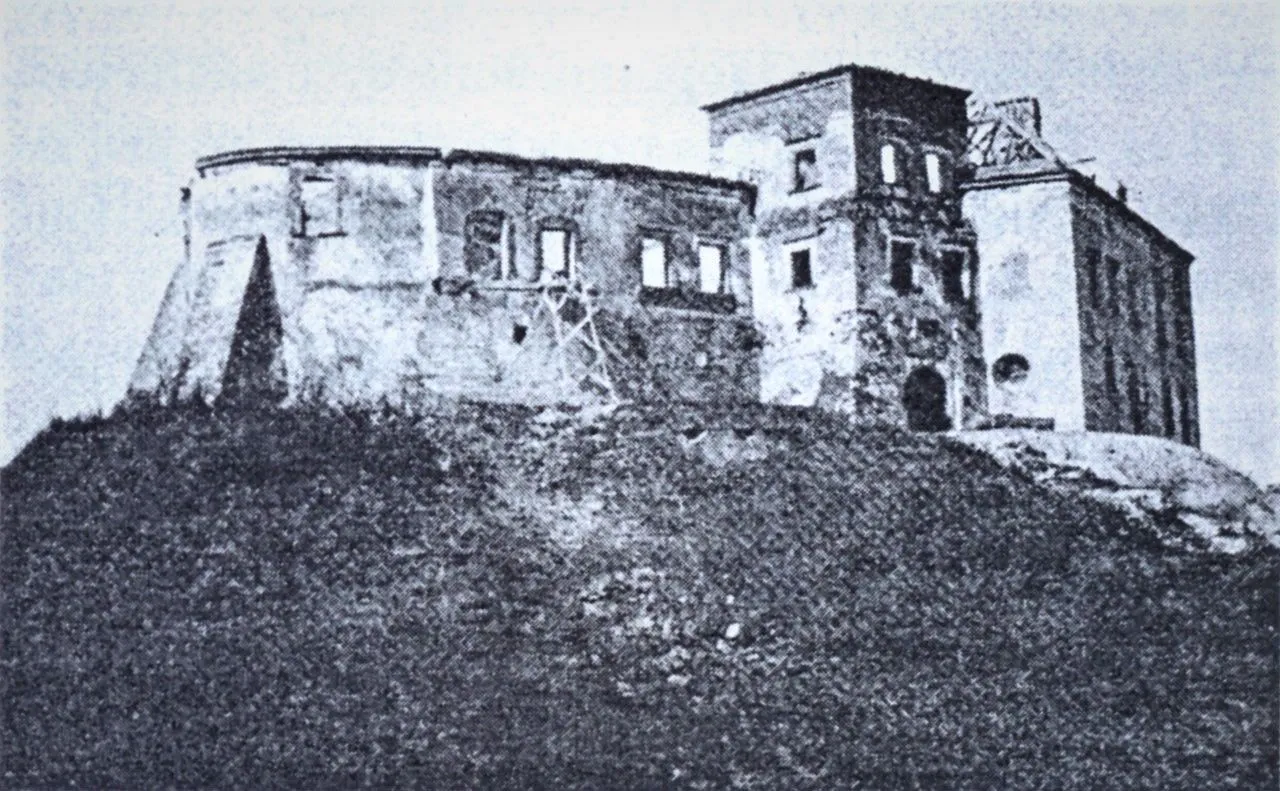
In 1960.
Source
The castle could not exist today. Like many other strongholds of my land. But thanks to the efforts of Borys Voznytsky and Andriy Shulyar, the castle was gradually restored in 1960-65. And than in 1975 they opened a wonderful museum with works of 15-18 centuries (furniture, paintings, tapestries, iconography and sculptures).
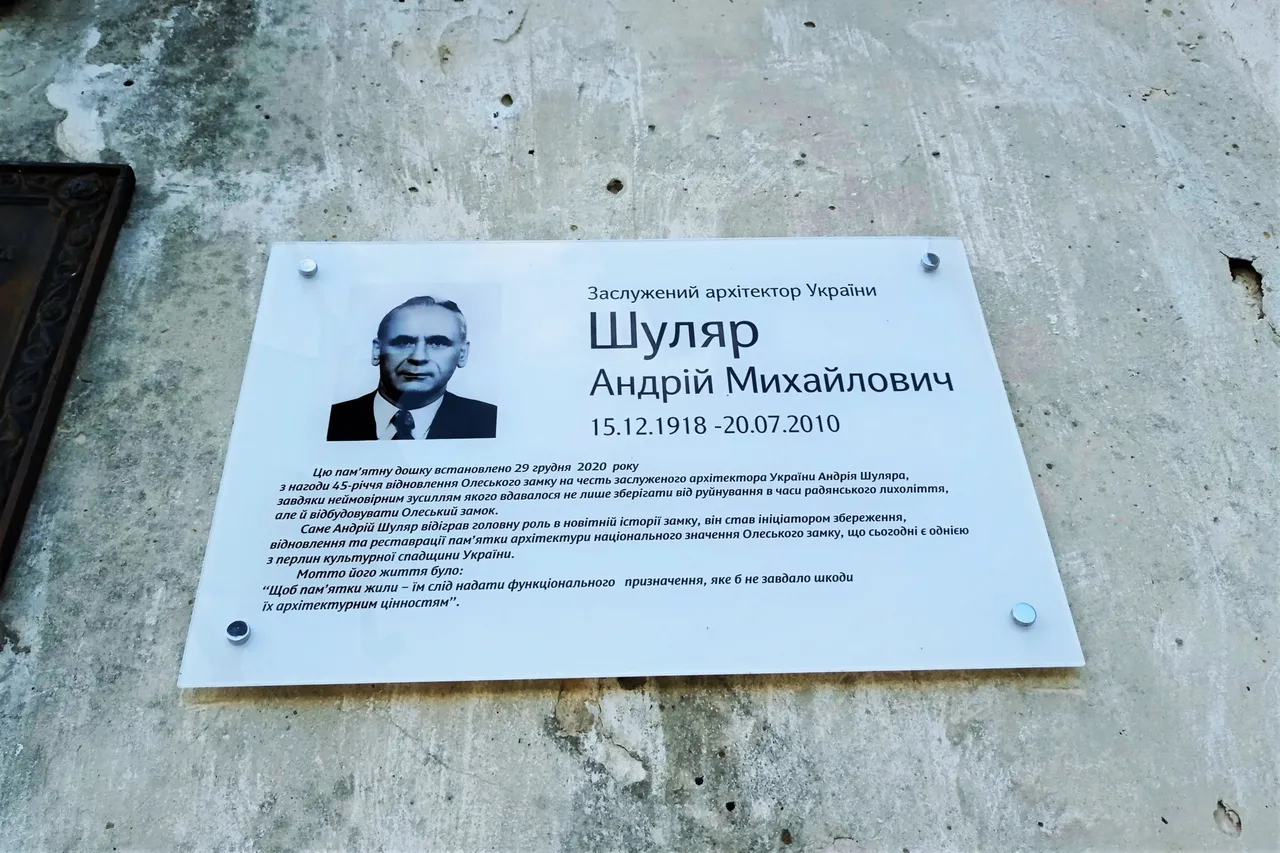
Memorial plaque in honor of the rebuilder of the castle A. Shulyar.
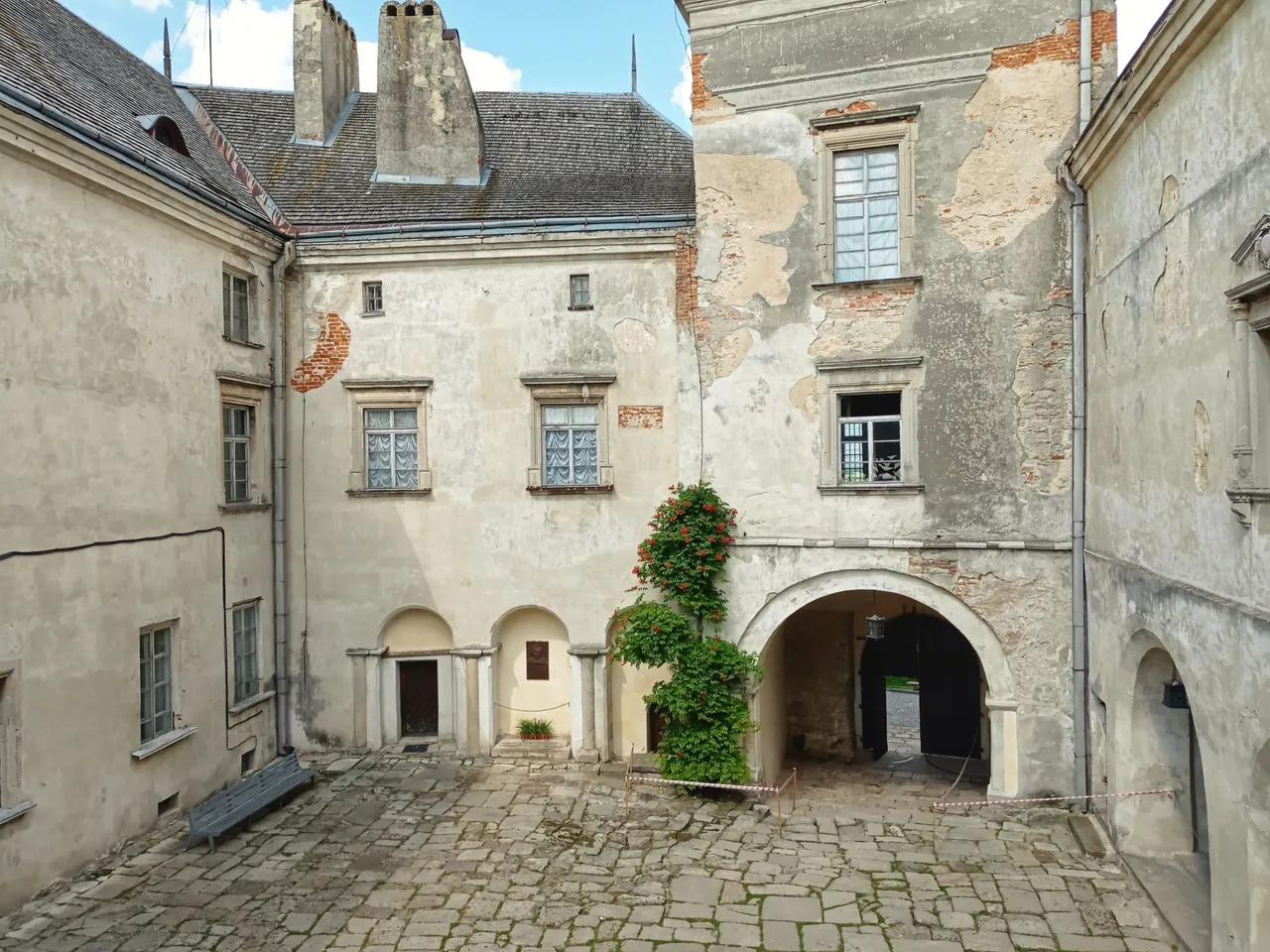
From my photos it is easy to guess that the castle needs to be repaired again! In our country, there is always a lack of funds for such things, although there is no shortage of millionaires and billionaires. I talked to the museum staff and they told me that the windows were being replaced. After all, windows that let in air and moisture cannot protect valuable art samples!!!
Going into the yard, I first looked around. The 40-meter-deep well is no longer active, but it once gave life to soldiers and residents who hid here!

It is important for Ukrainians to know that this is where the childhood of our Hetman Bohdan Khmelnytsky passed. After all, his father Mikhail was a servant and assistant of Jan Danilovich.
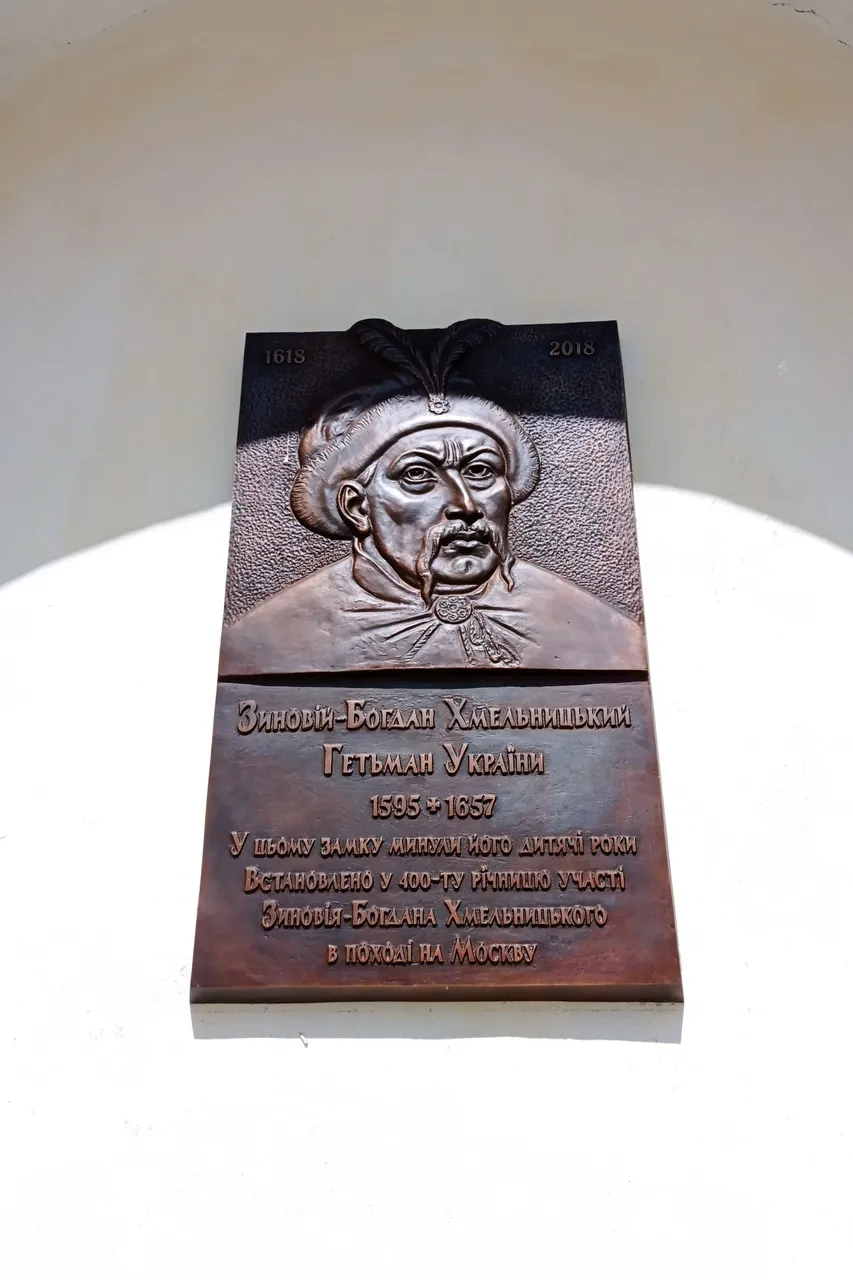
This is a cozy courtyard. I go to my favorite wooden gallery. It does not exist in old drawings. I think it was created after the last restoration and it is logical, because such galleries were once in castles.
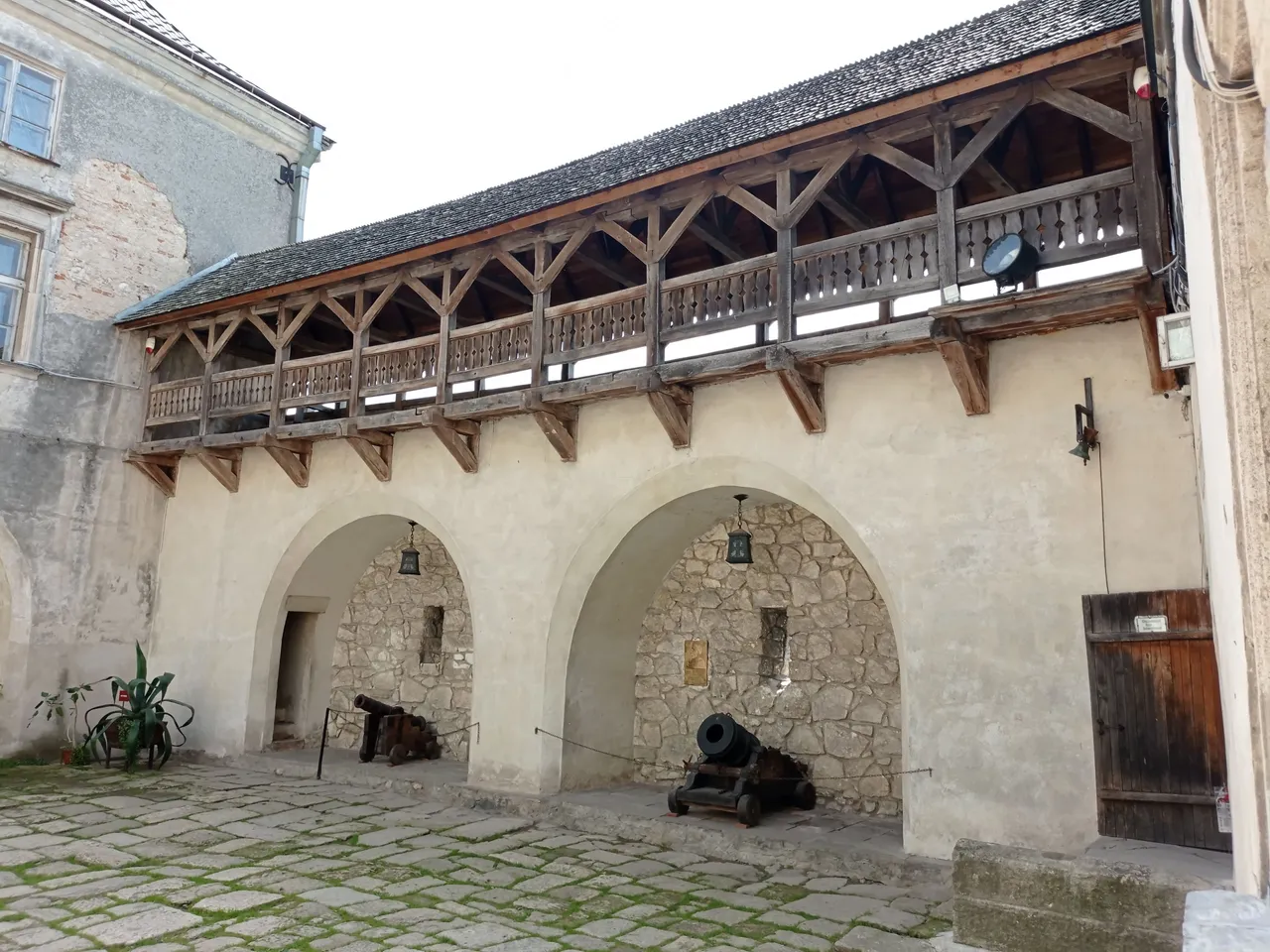

From here we see a beautiful landscape. And what a sky it was that day!! There under the forest on the horizon is my hamlet.
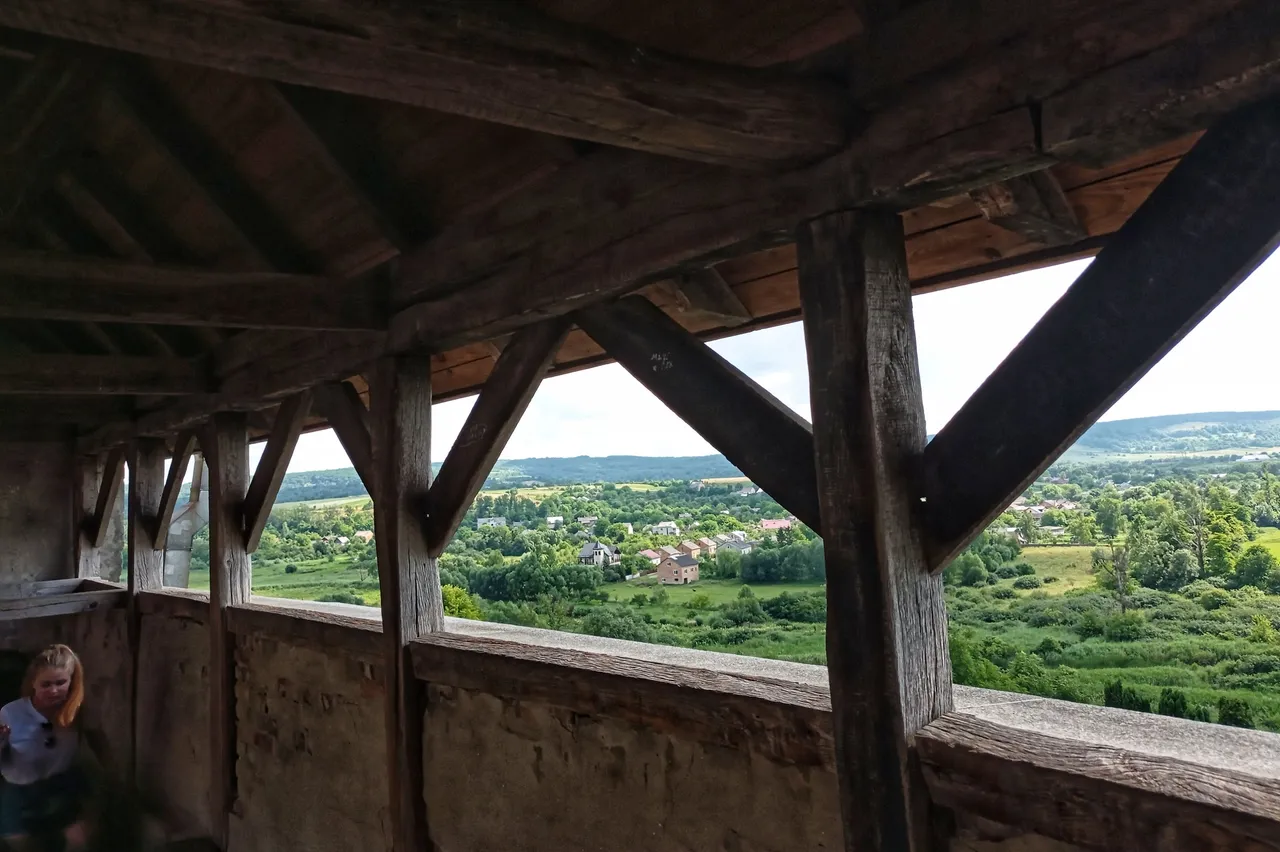

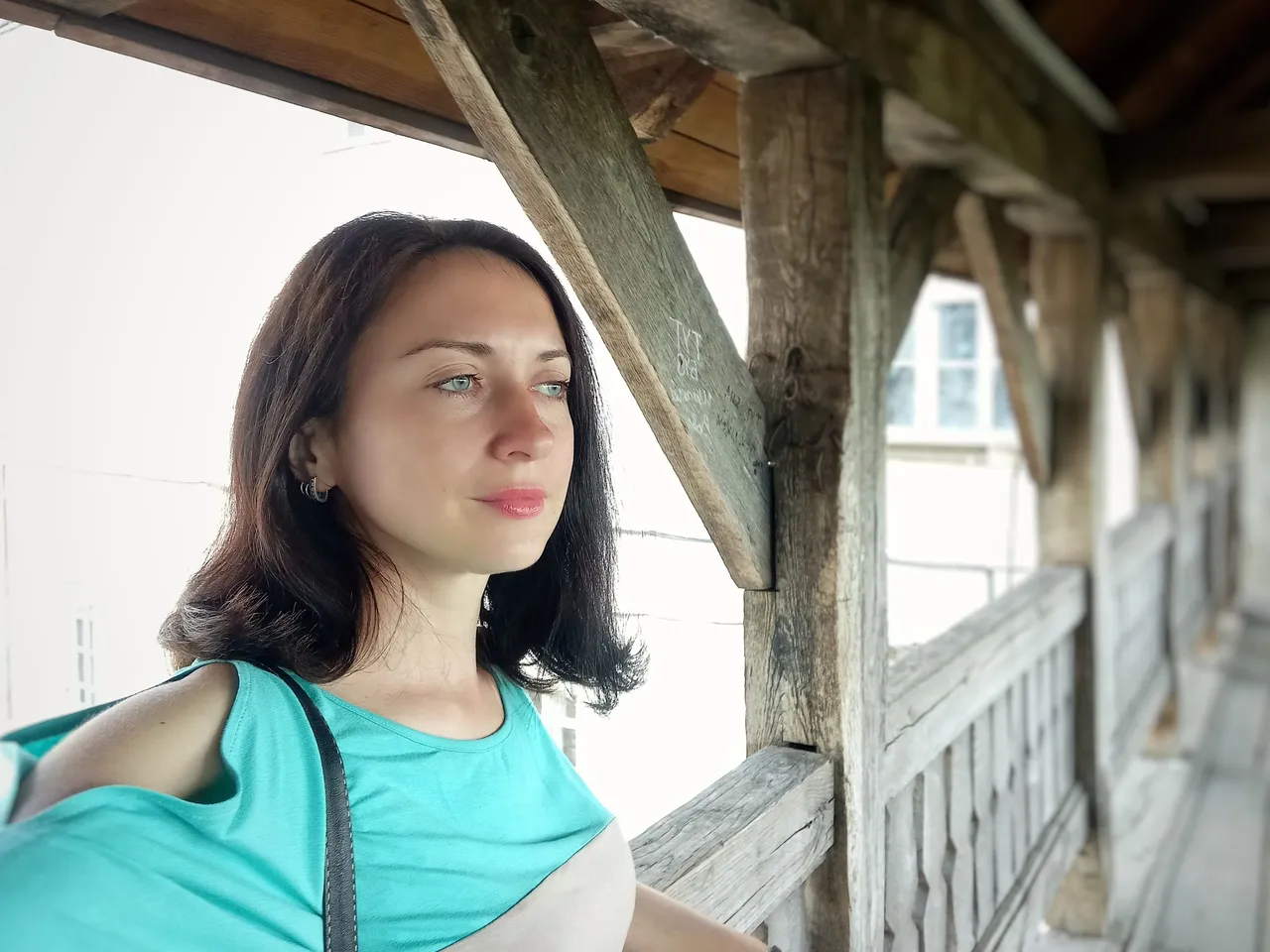
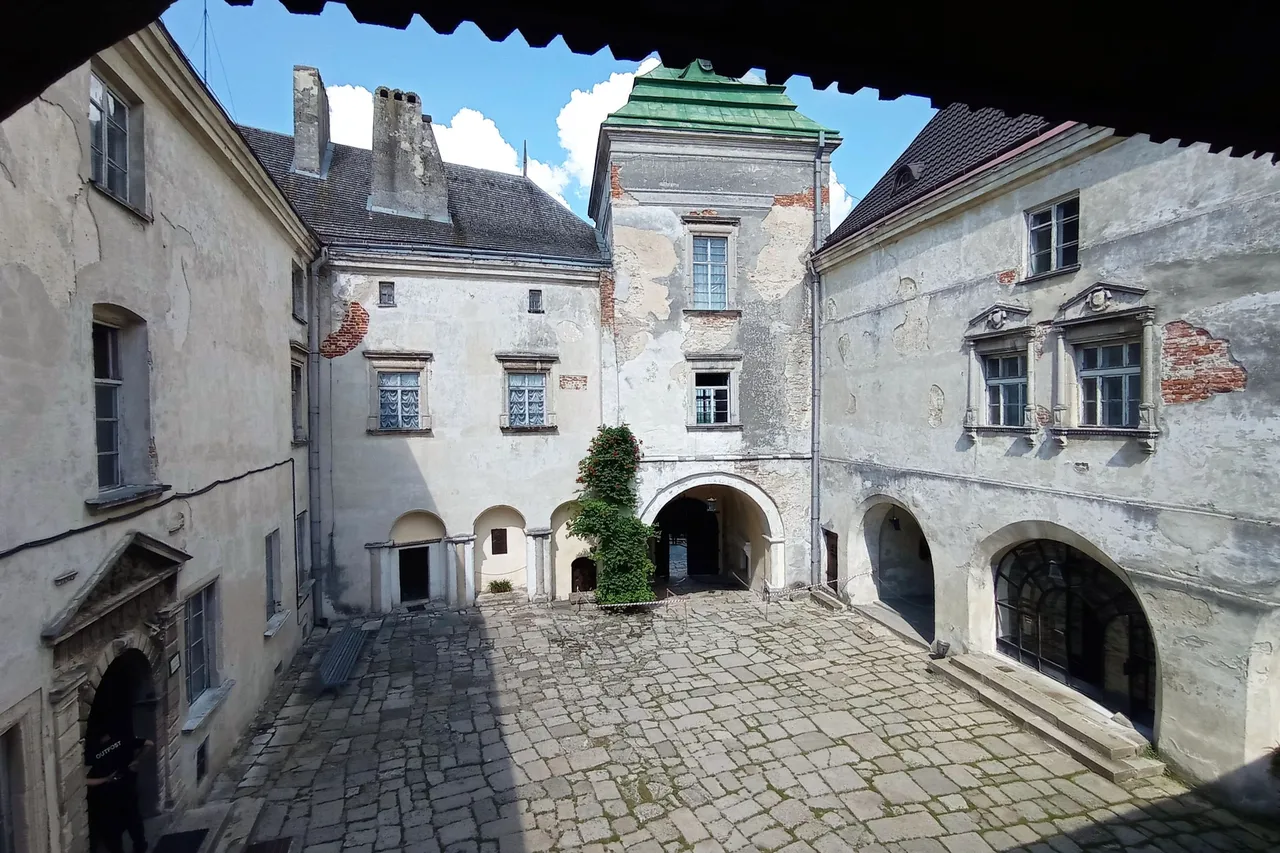

I later reviewed the museum's exhibit, but I'll leave a description of it for the next article!
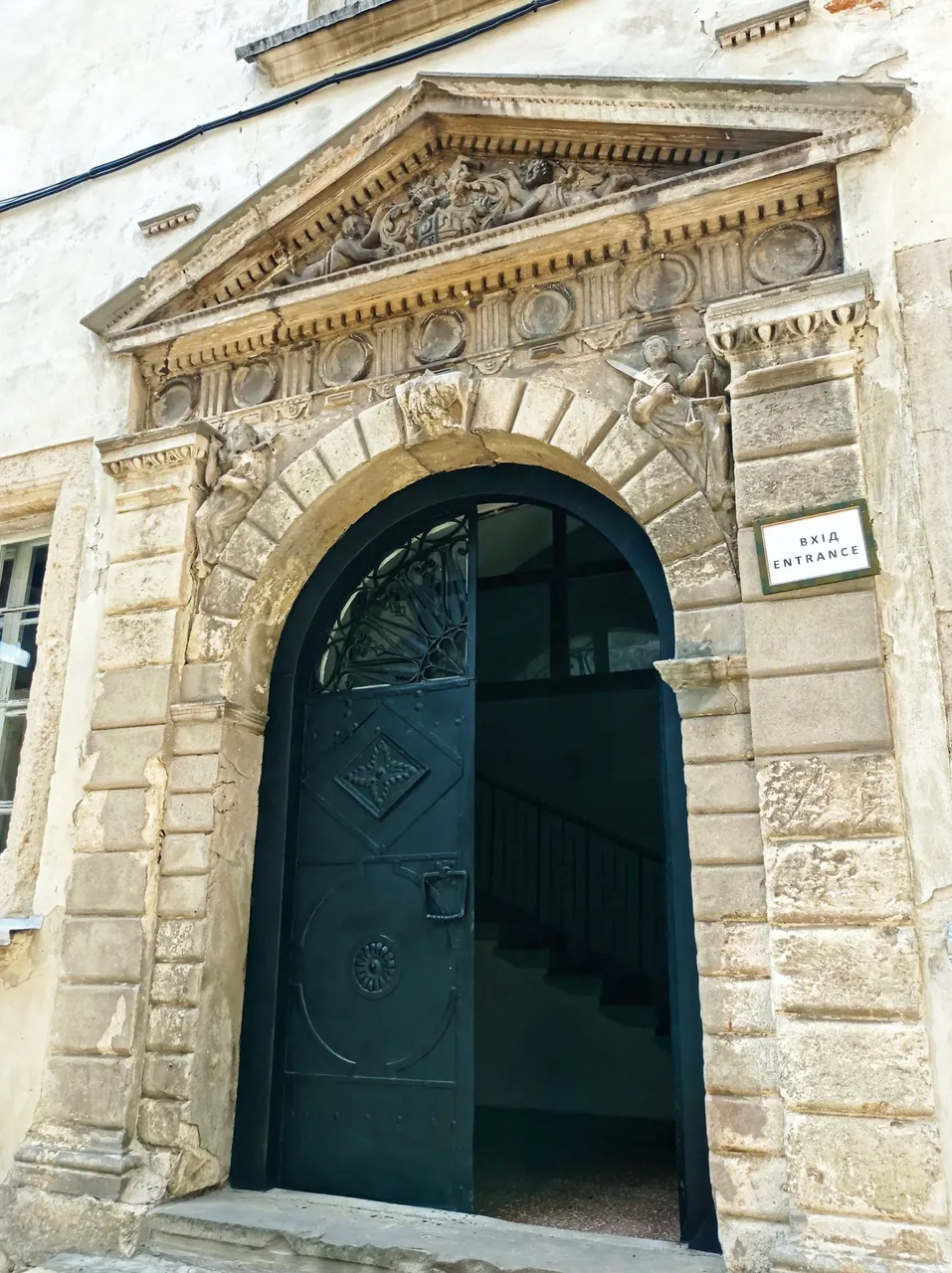
I like antiques very much!
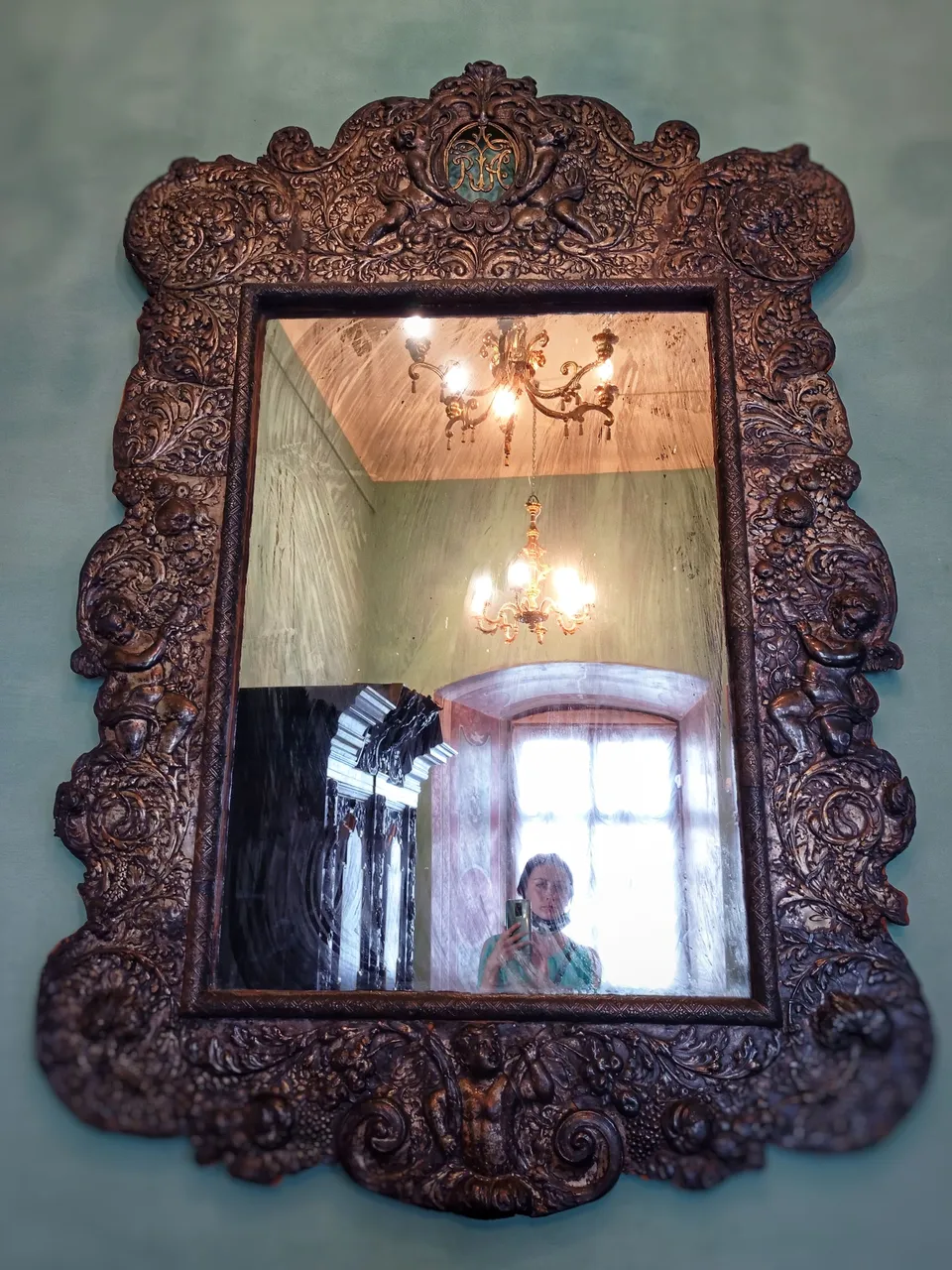
And this is well in the dungeon!
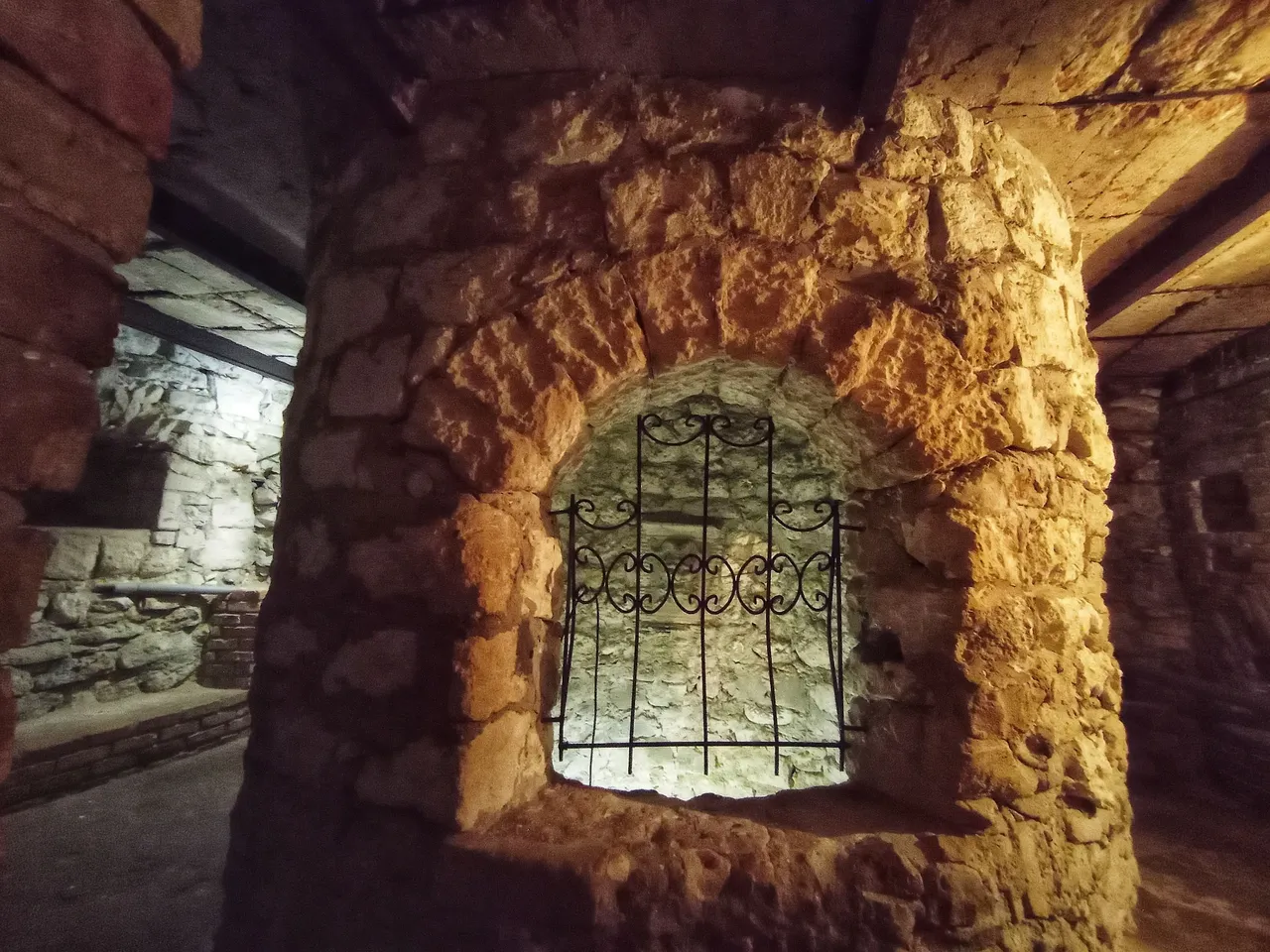
It was warm that day, even hot, so I hurried for a walk in the park, where old and rare trees have been preserved! I decided to walk outside around the castle. It is built of stone (basements and ground floor) and brick, which is plastered on top.

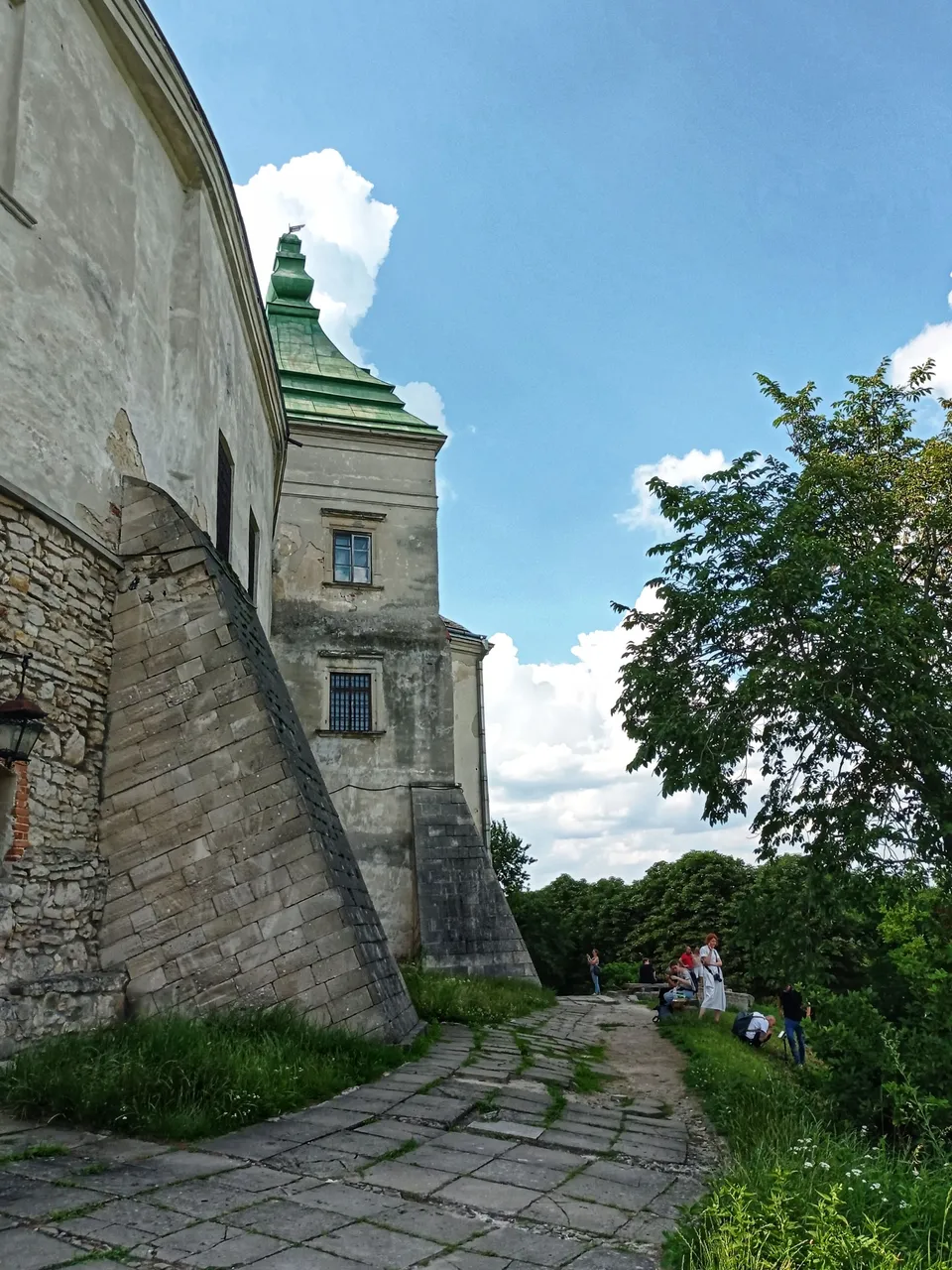
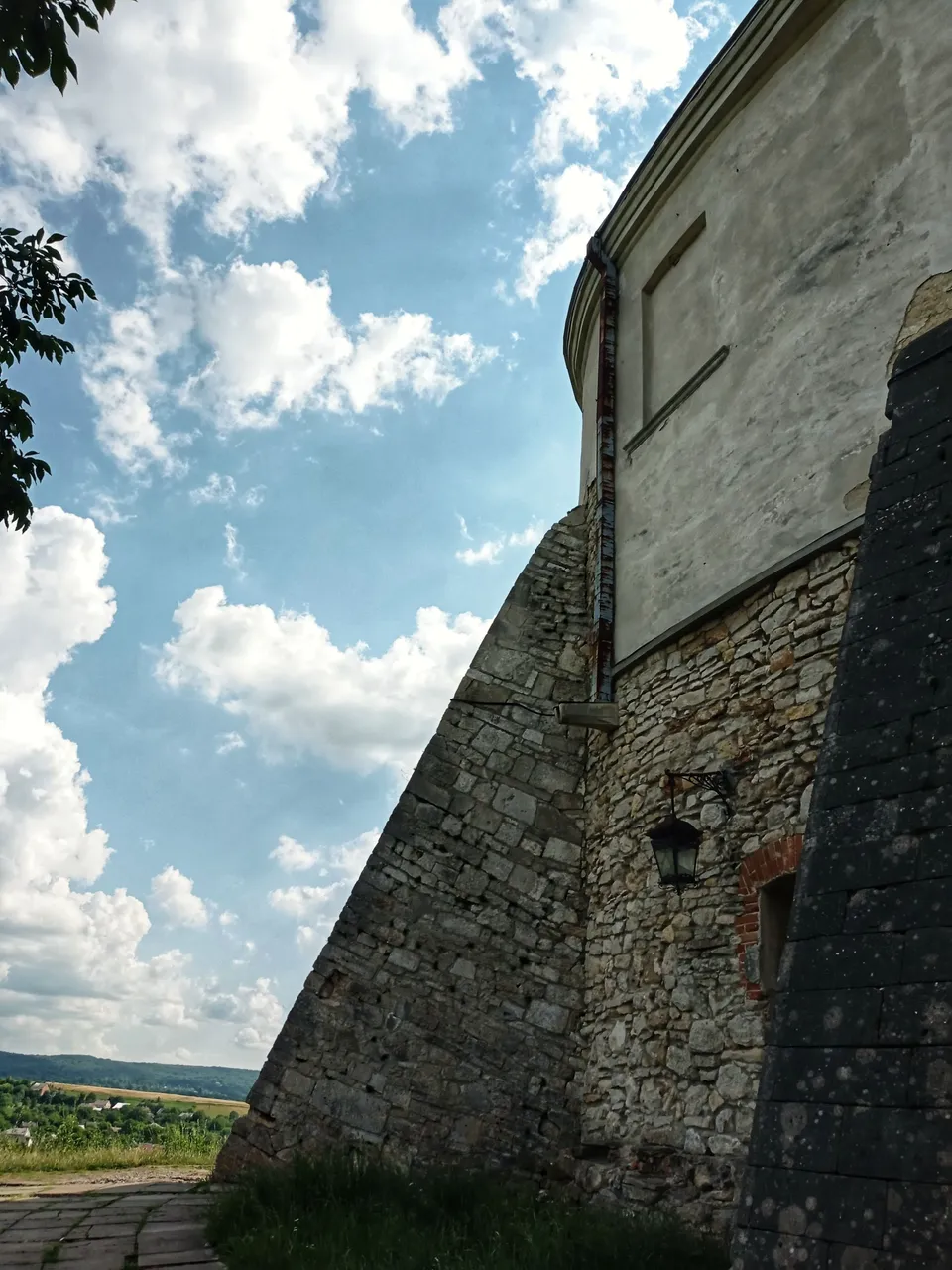
These buttresses deceived me! I thought they were from the Middle Ages, just covered with modern tiles. But it turns out that these supports appeared here only in the 19th century, when after an earthquake a crack appeared in the castle wall.

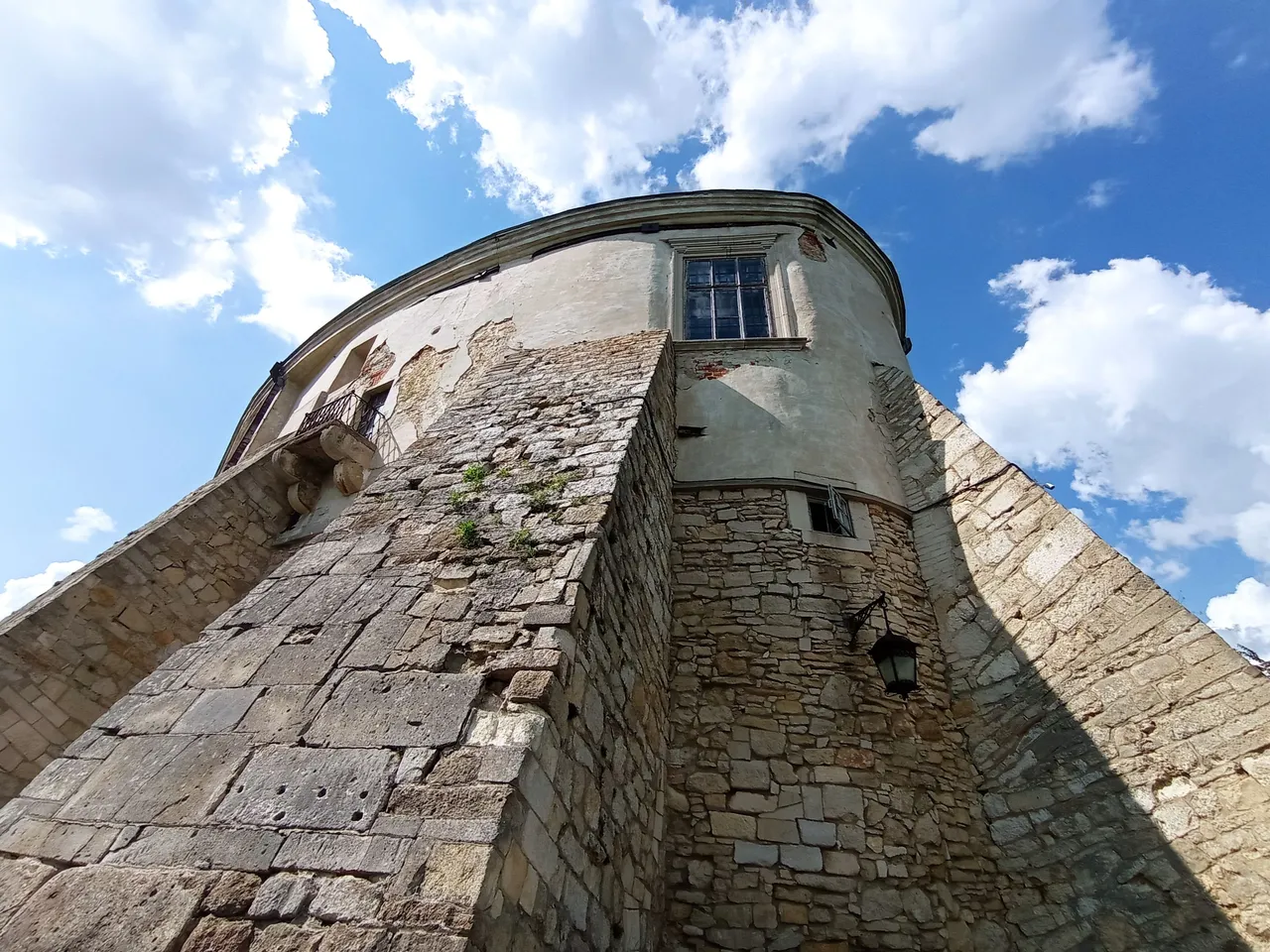
Another feature I discovered this year. From the side of my village, if you look at the castle from afar, it seems that it is symmetrical. Optical deception! After all, the left part is oval and slightly smaller, and the right part is rectangular (in the form of the letter "Г") and slightly larger.
I like to look at the details of old buildings. Wrought iron windows, heavy wooden doors also with wrought iron ornaments, lanterns, stone gutter...
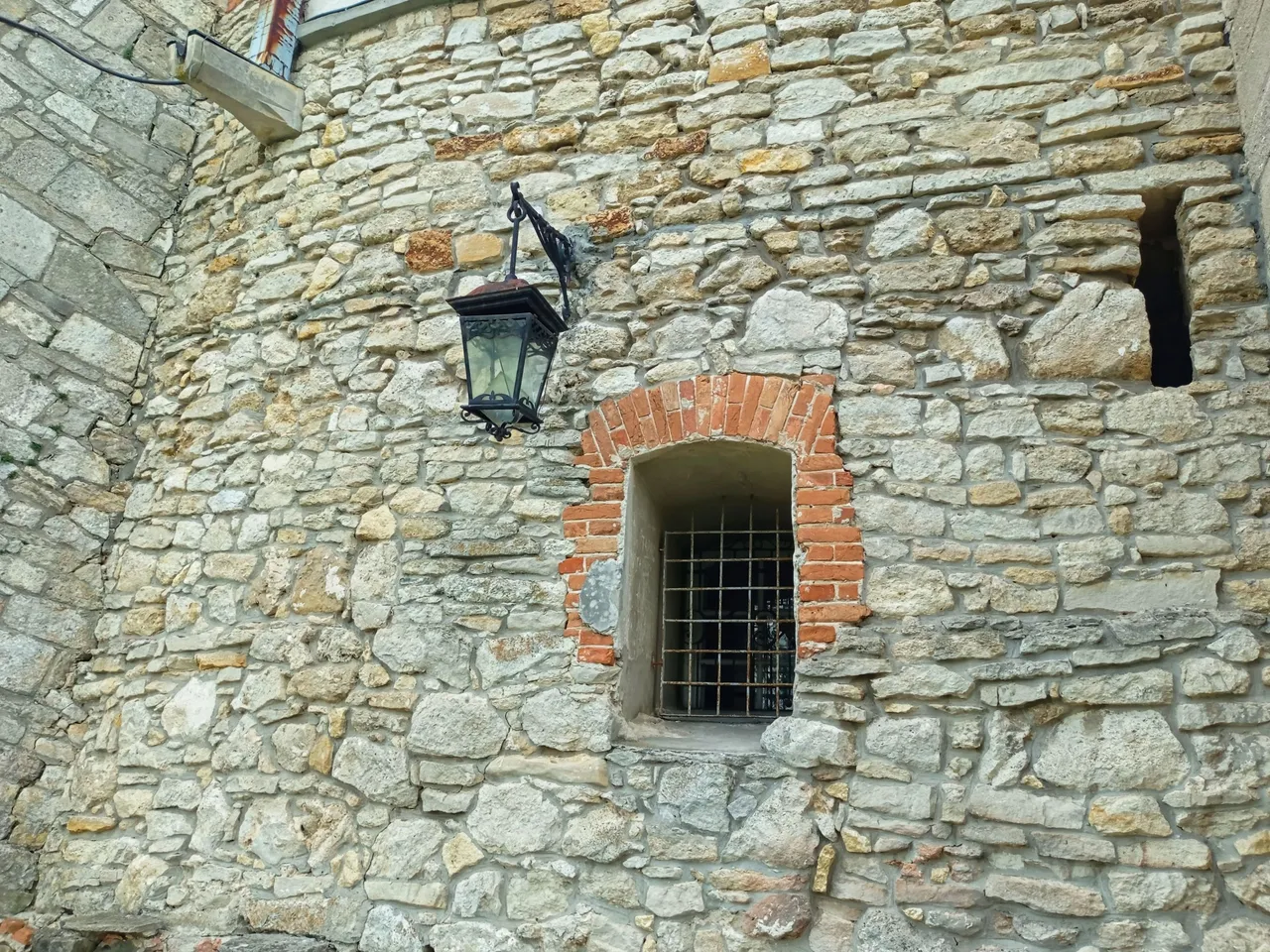
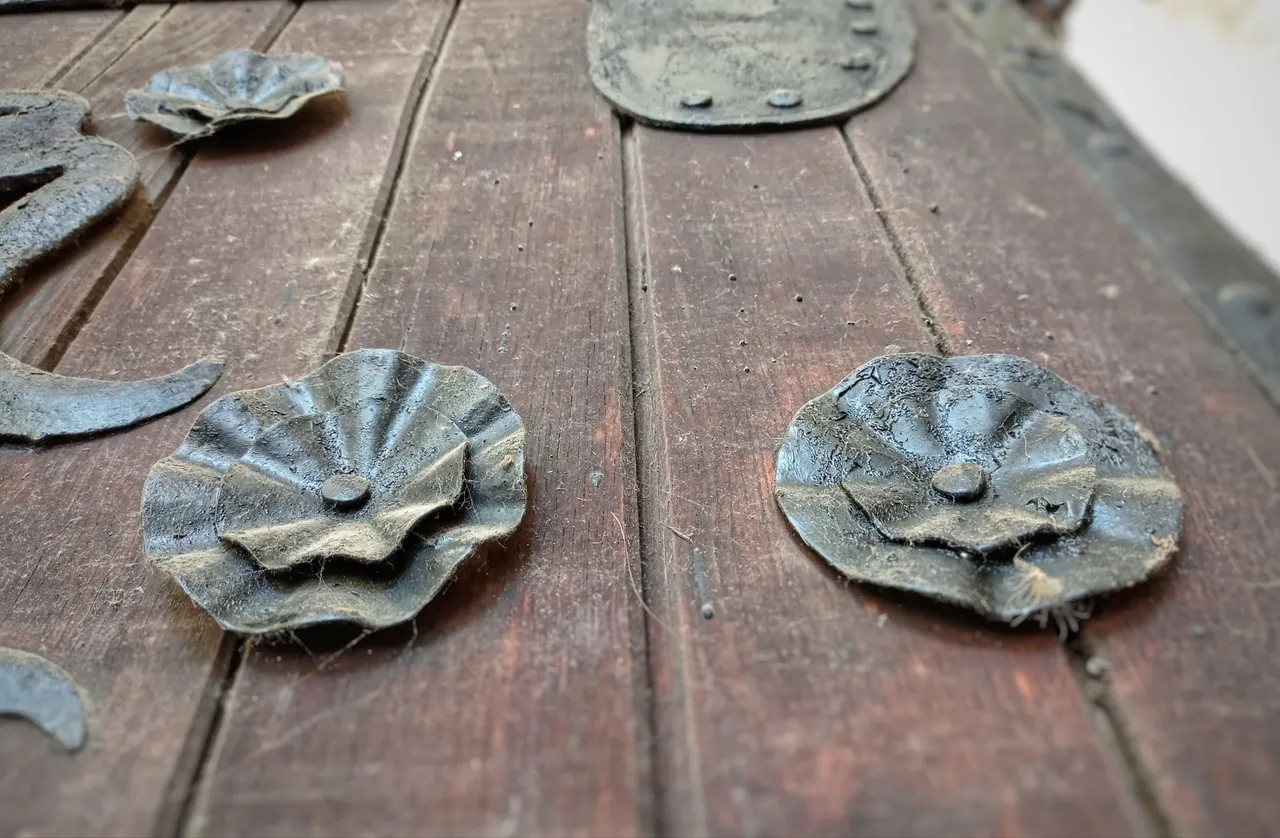
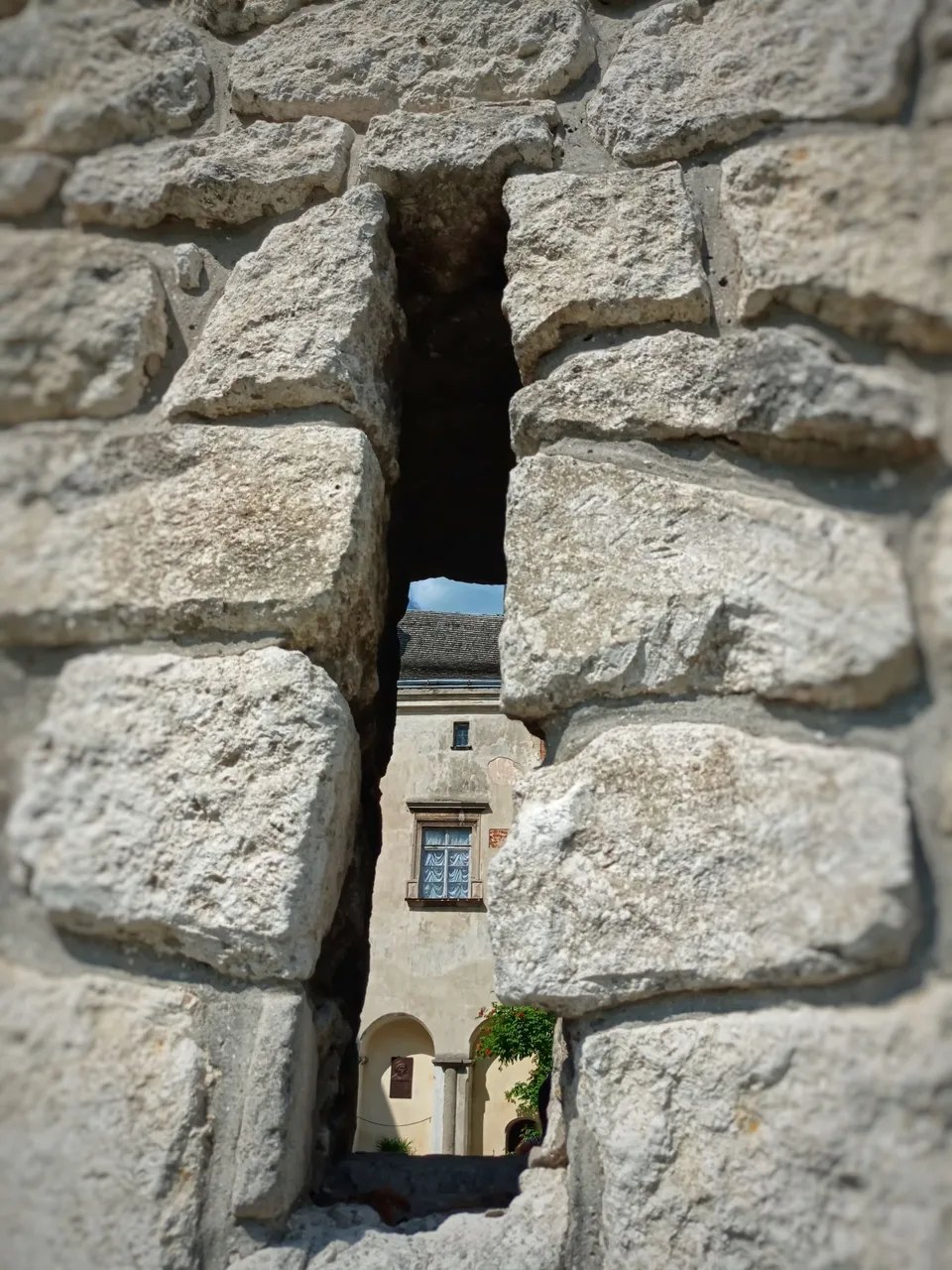
And through this loophole you can look into the yard where we just visited.

Later I went for a walk in the park. This is a real quest. After all, there are well-groomed areas, and there are also abandoned ones. There is no fence on the park side, so I don't even know where the castle territory ends.
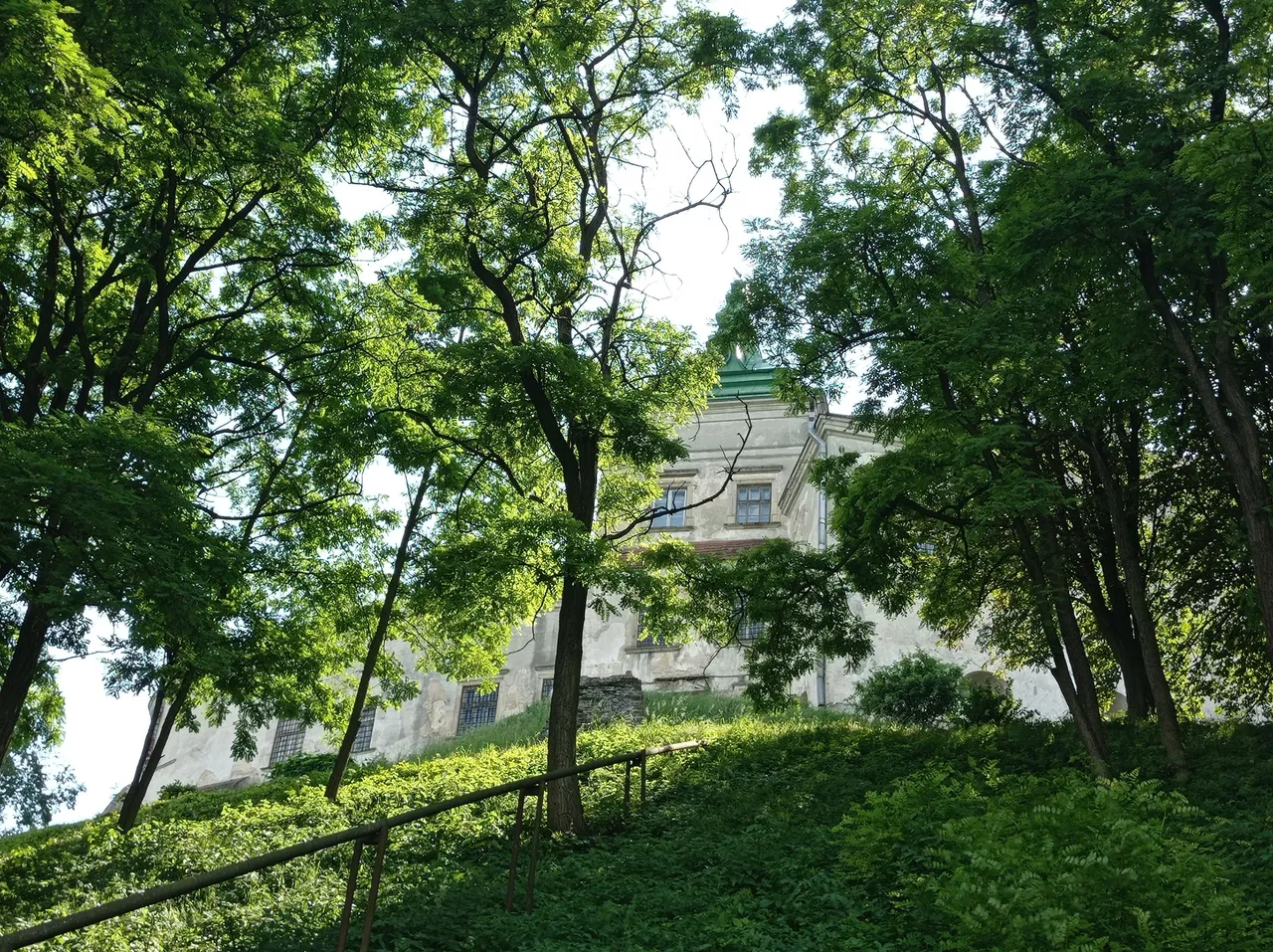
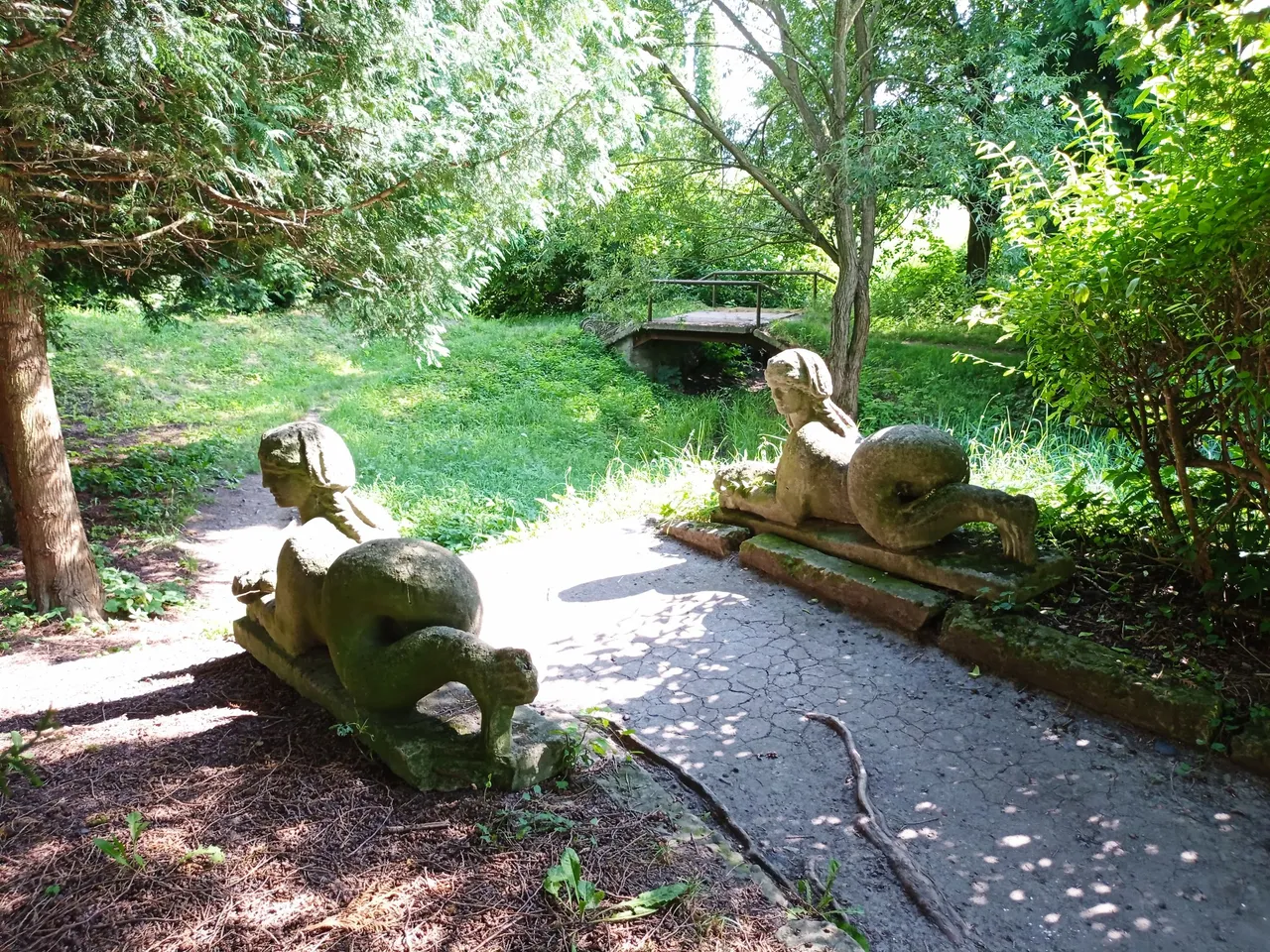
The English-style park has existed since ancient times, but nothing is known about it. What we have now are modern landings. I love nature, so I walked and admired the harmonious combination of the green world of plants, the gray castle building and unexpected modern sculptures.
I have already written specifically about the park here.
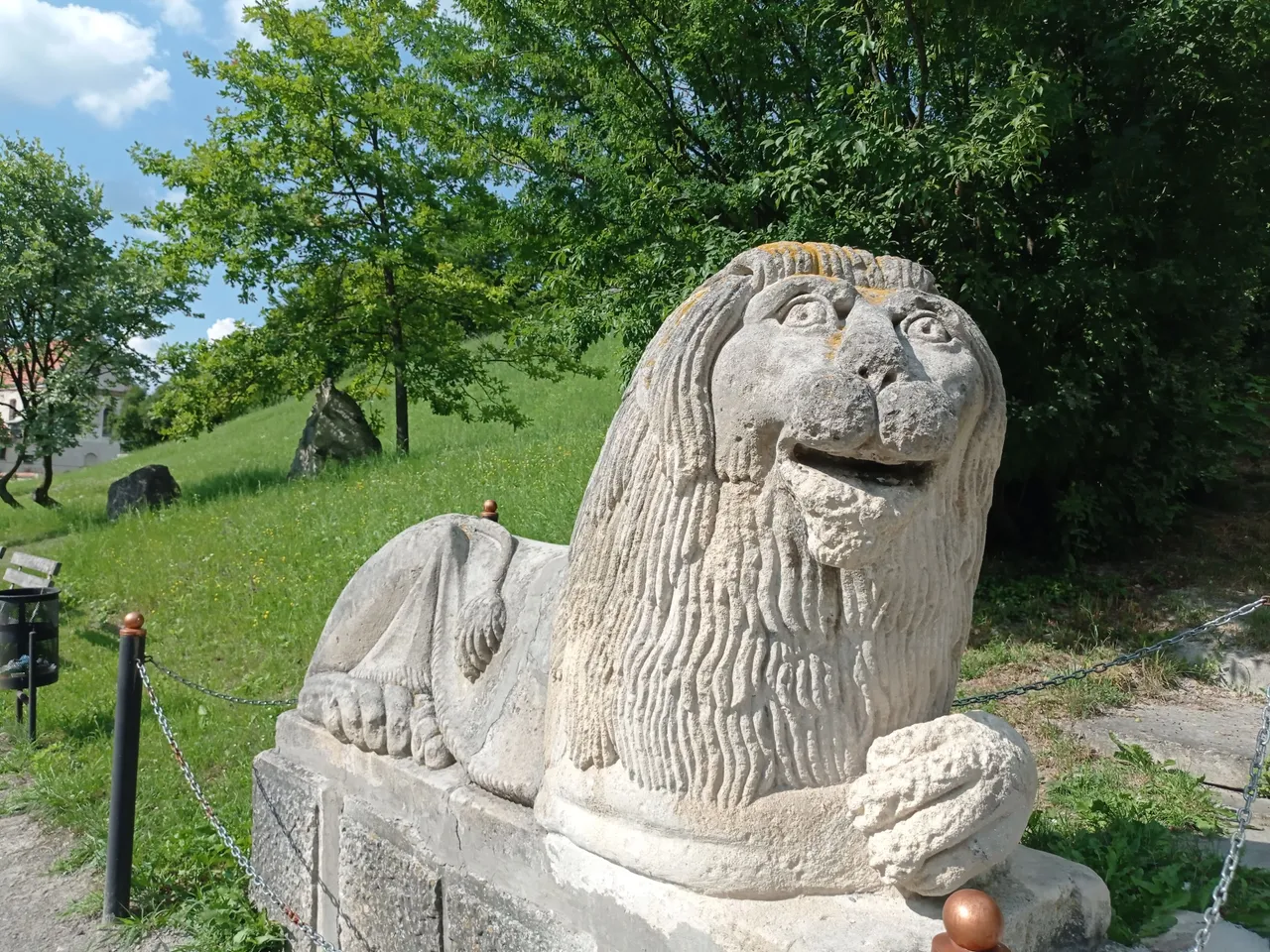
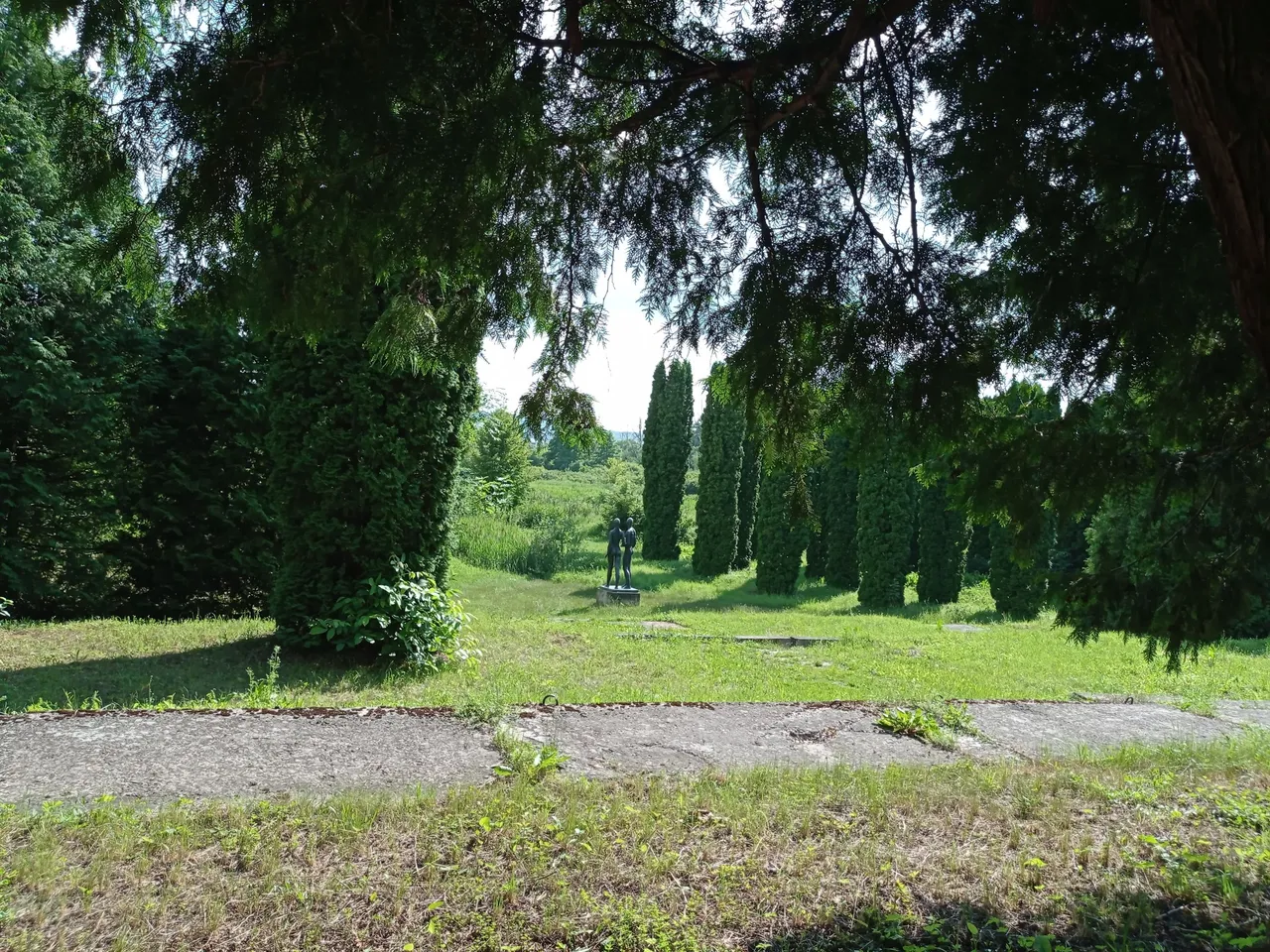
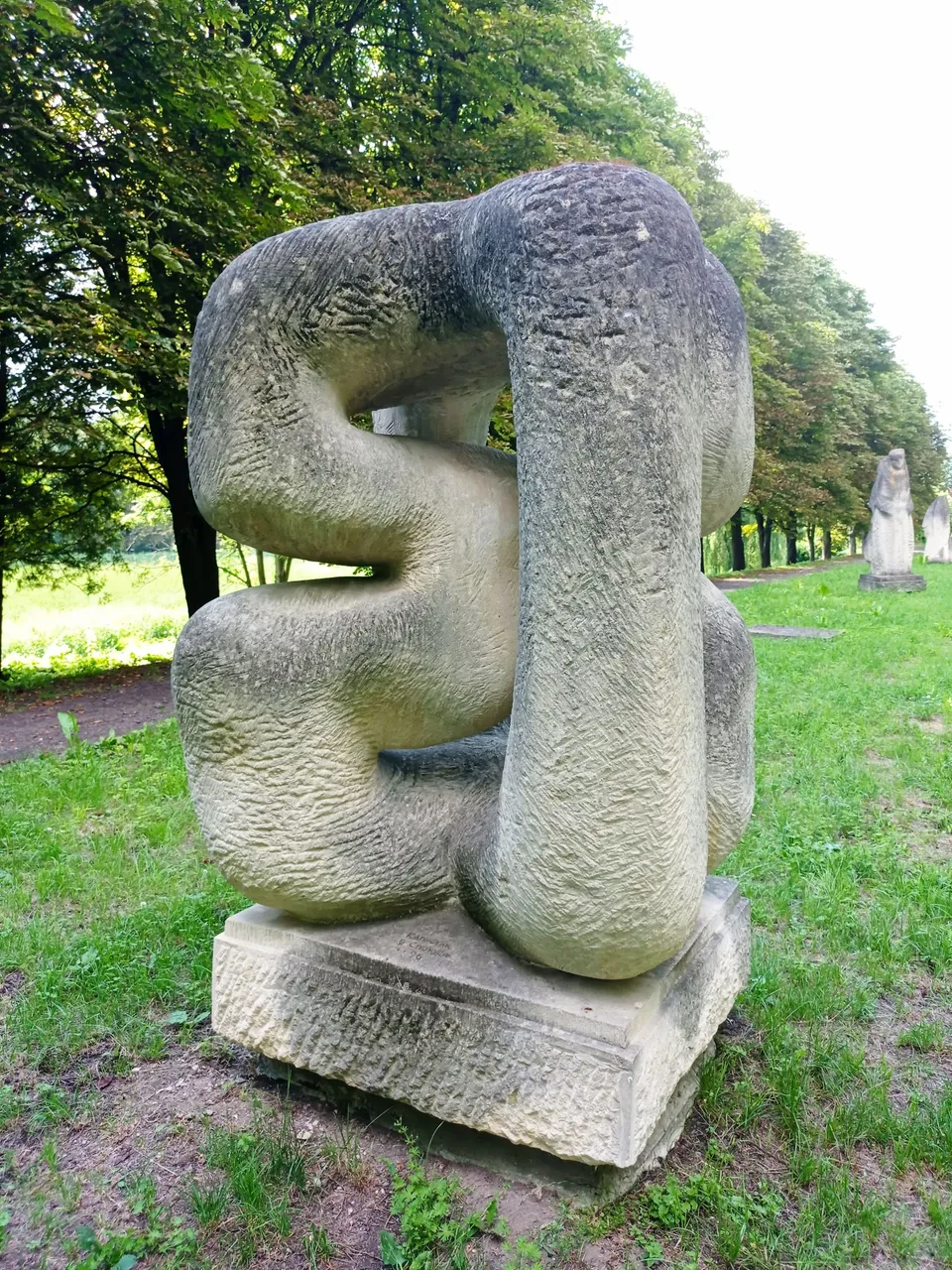
In fact, I feel that my story about Olesko's hometown will continue! So stay close if you want to travel to the past with me.
Thanks for your reading and comments!!!
Subscribe to the great community Architecture+Design and tell us about your favorite buildings and projects.
